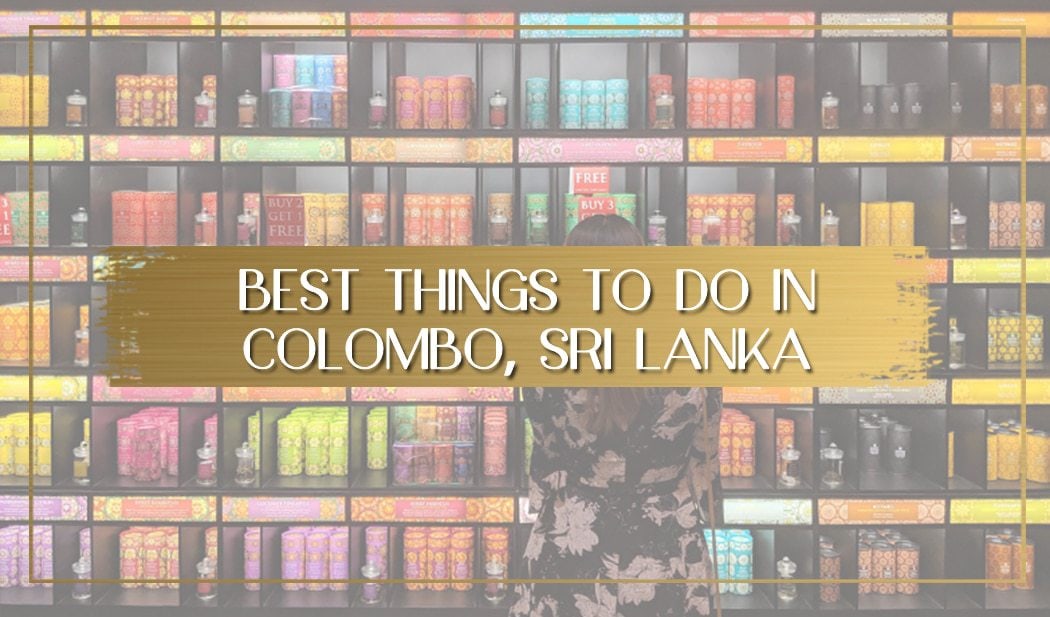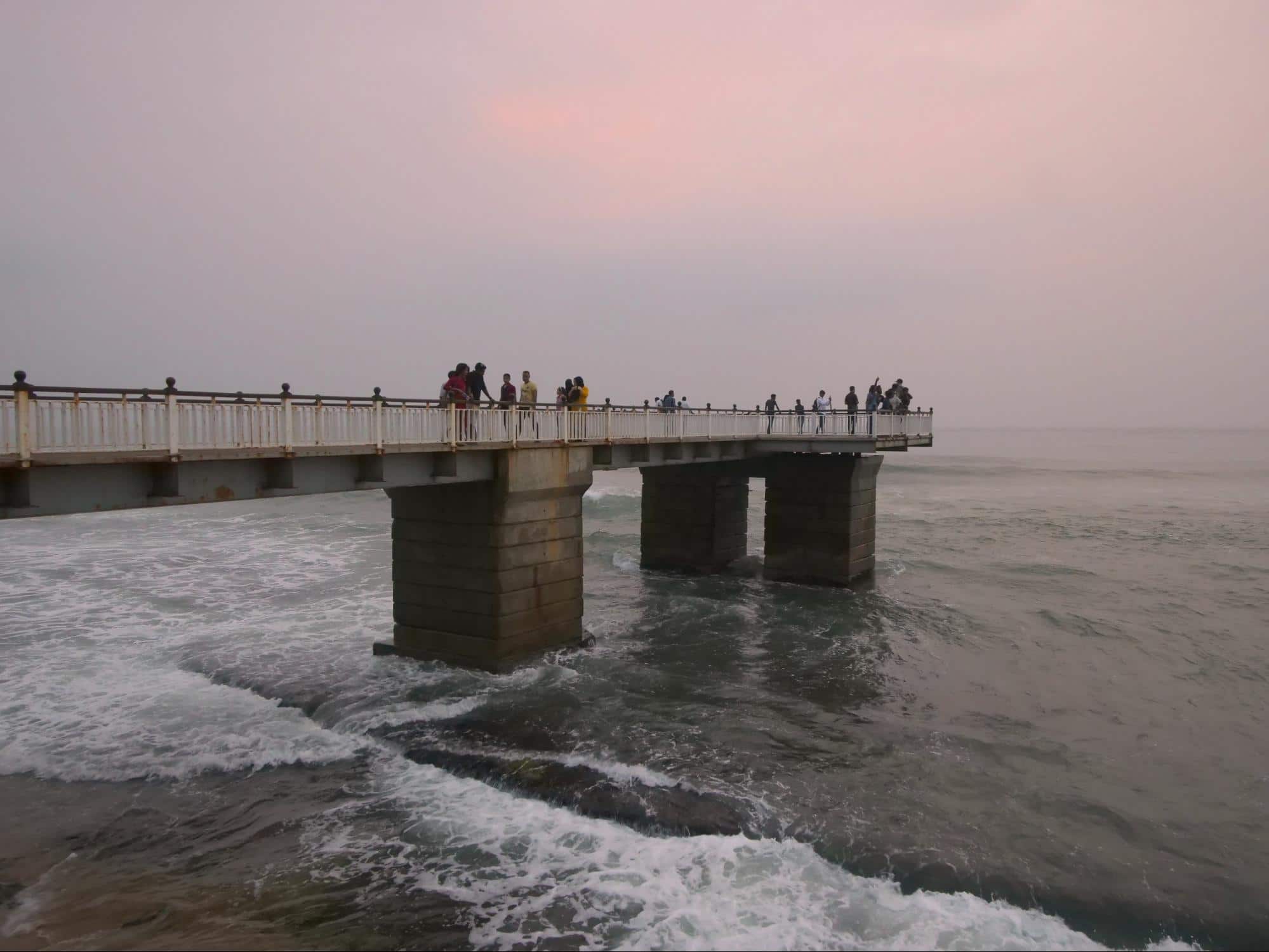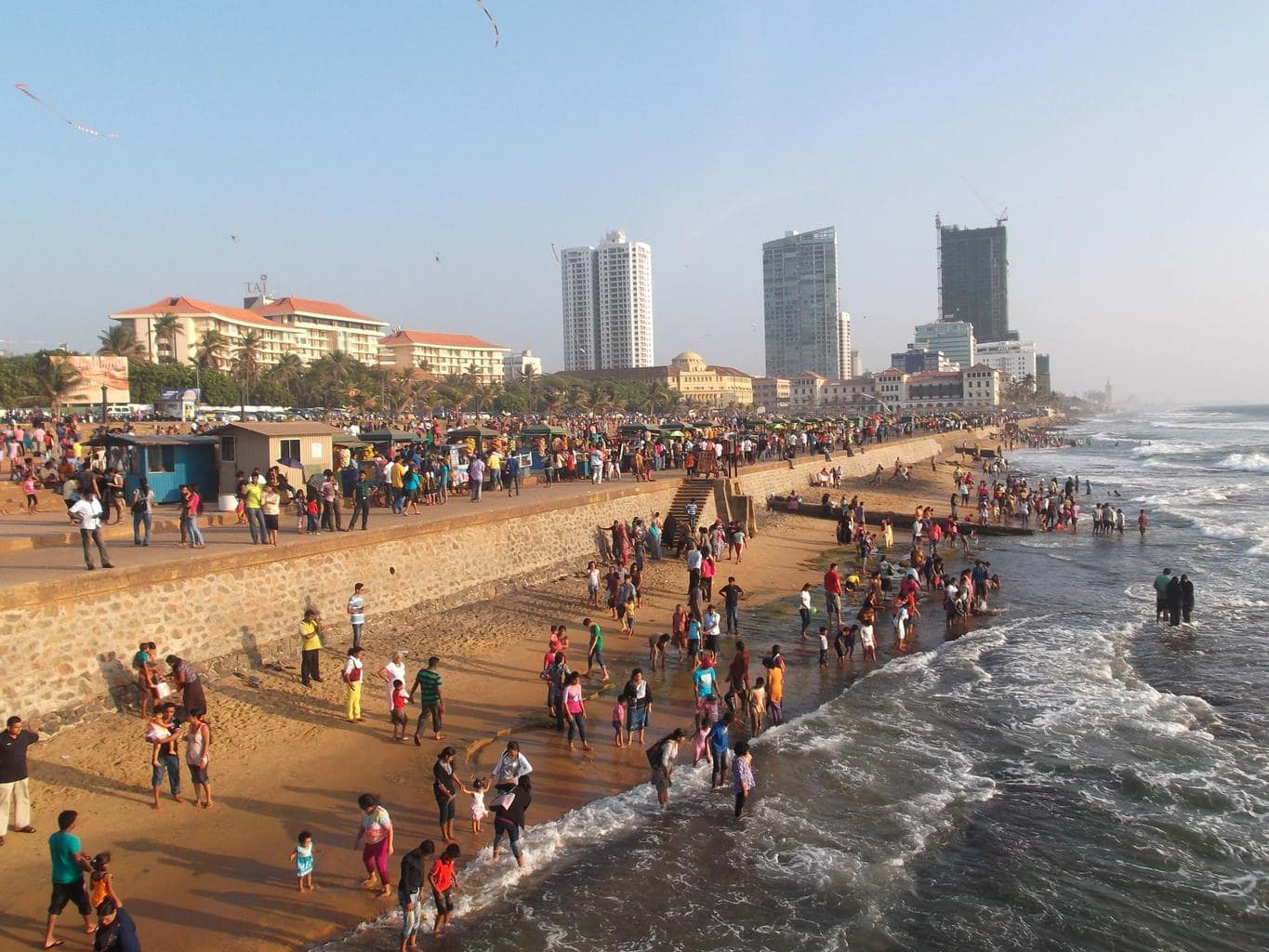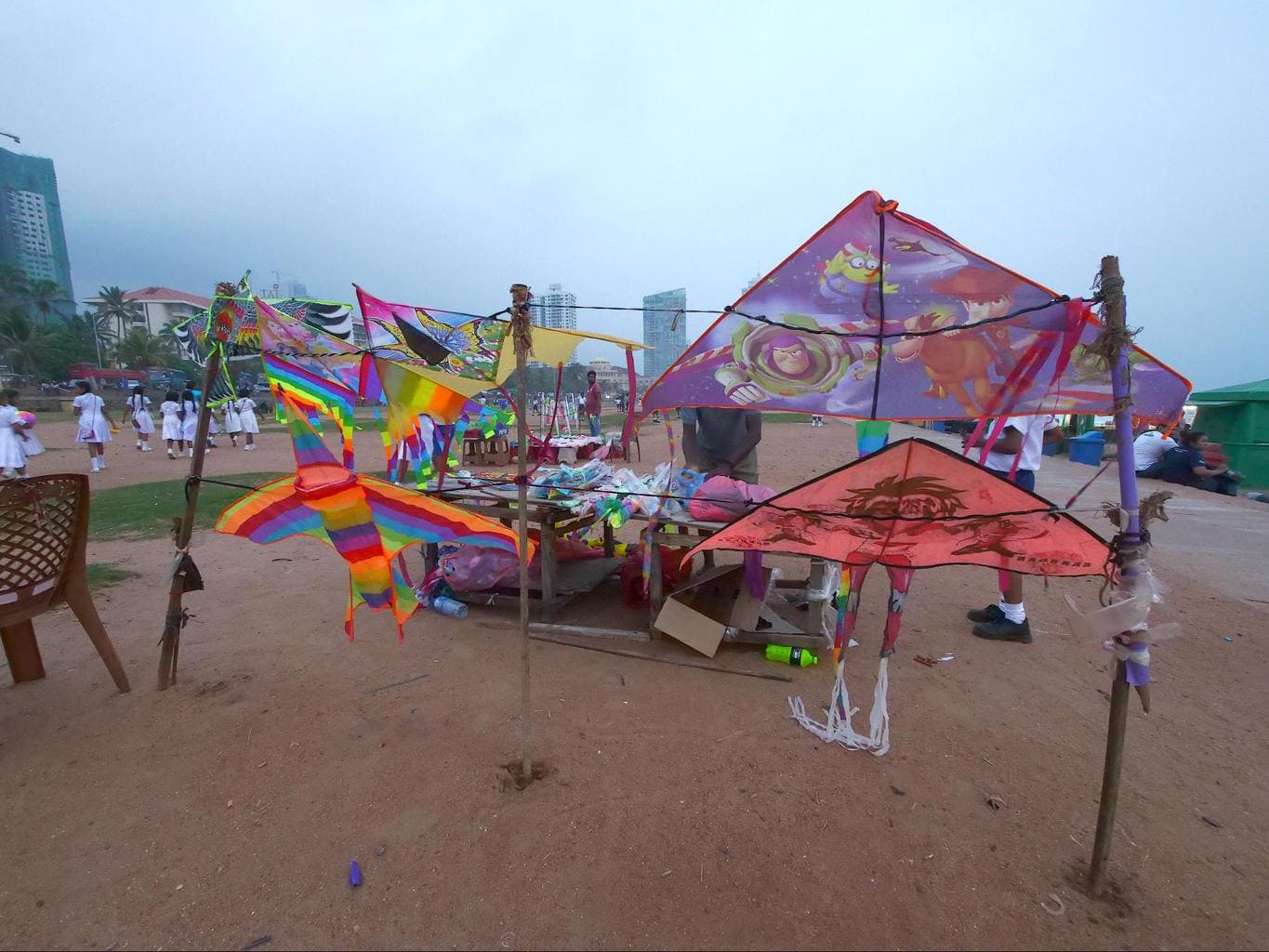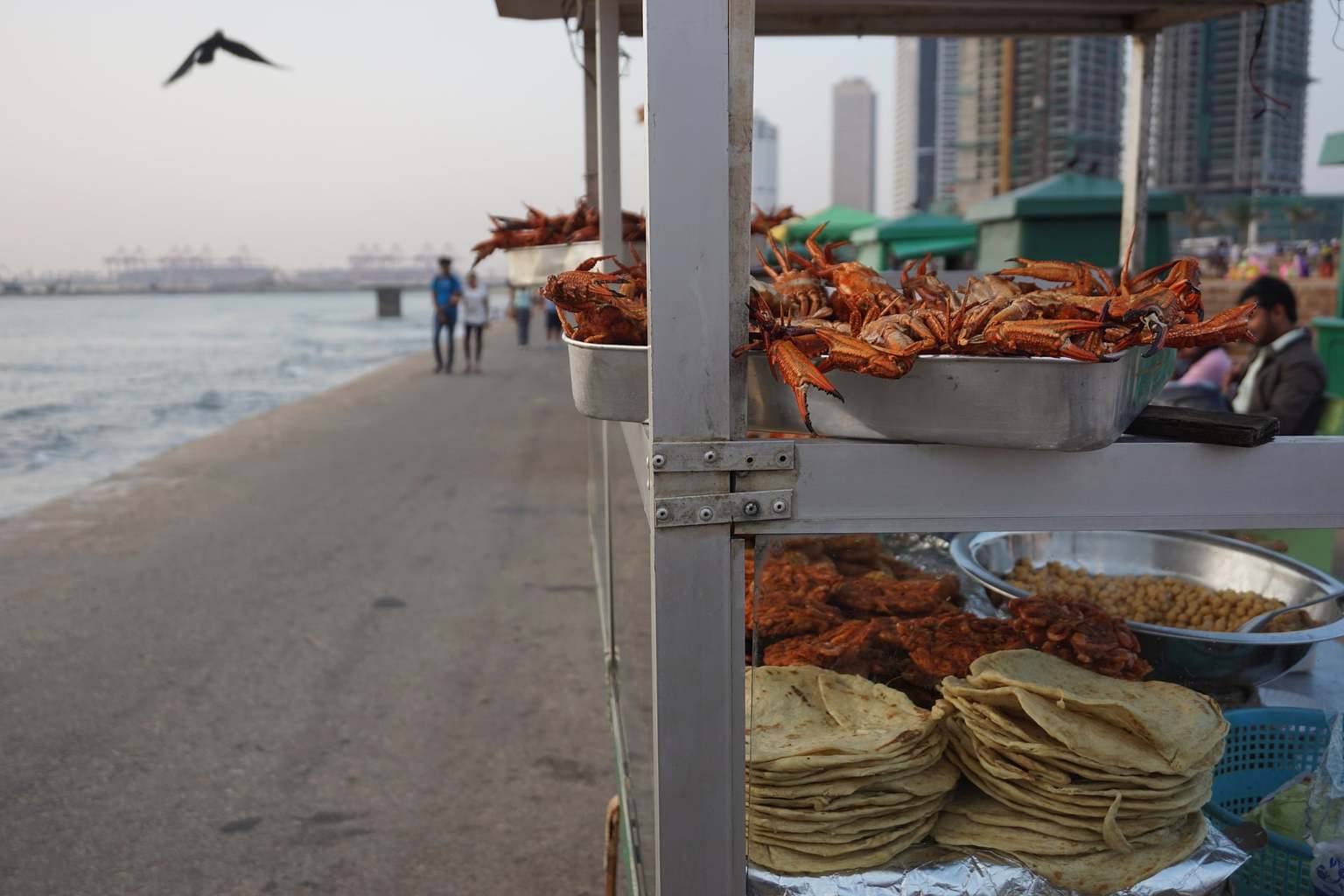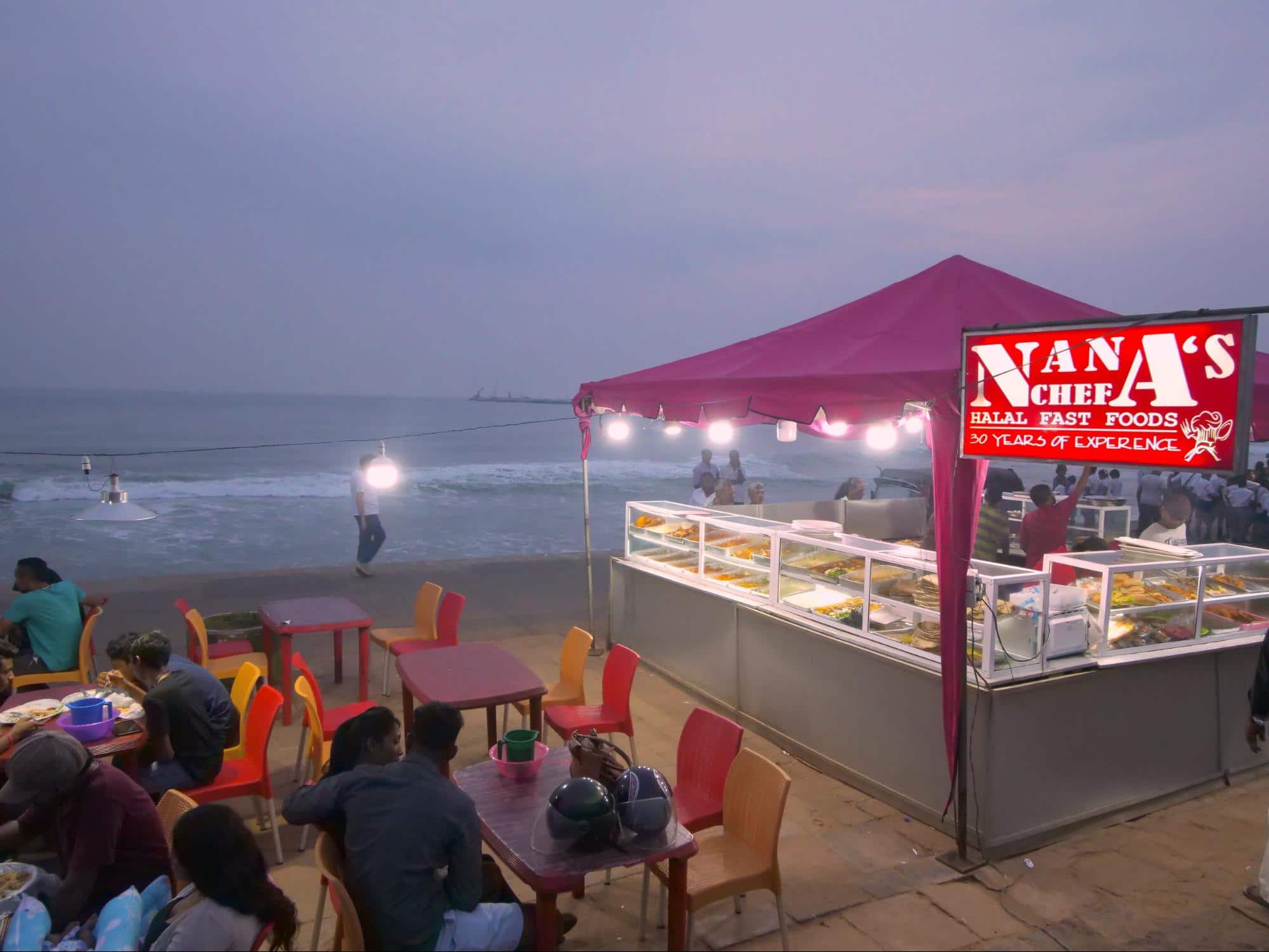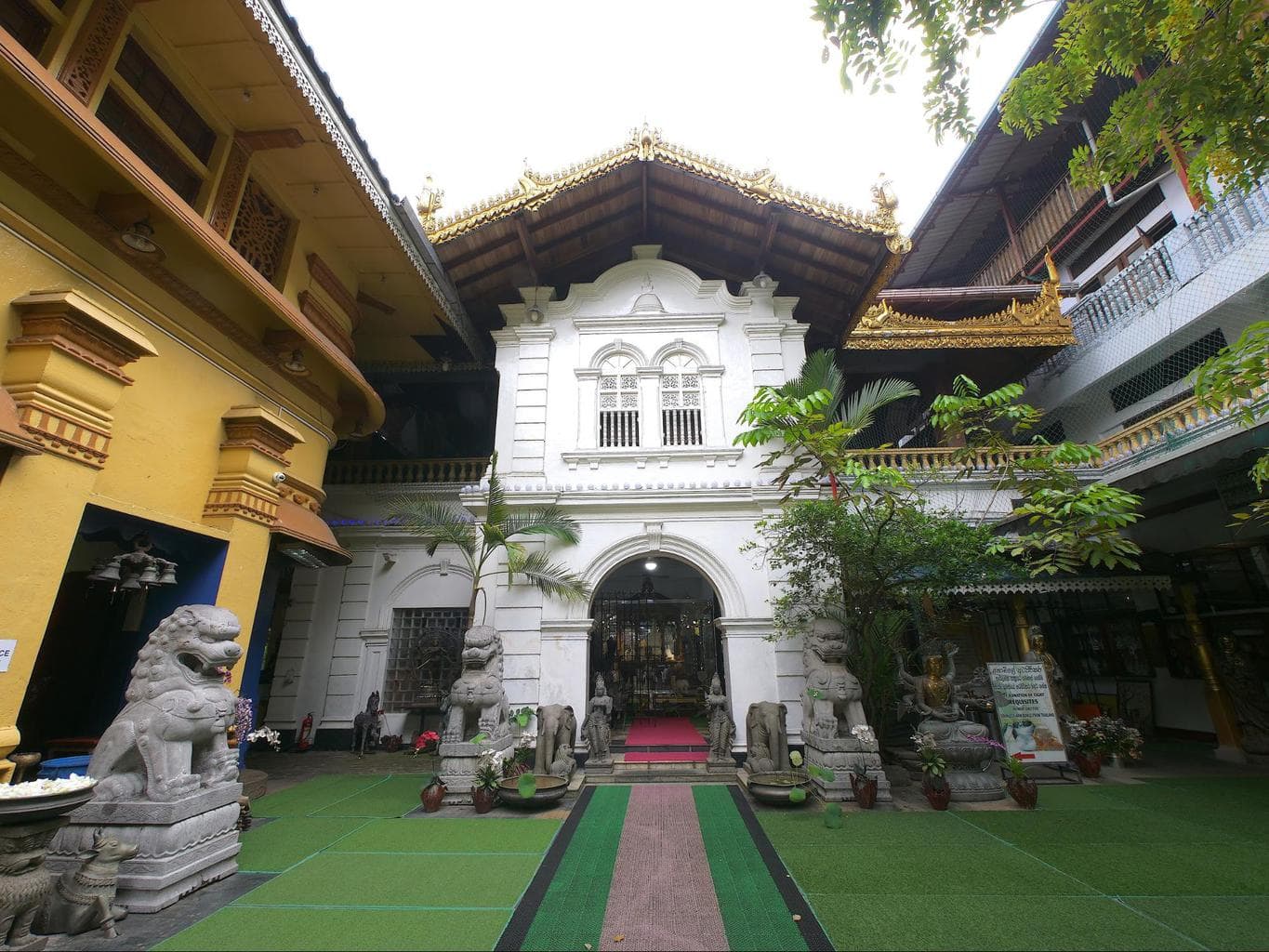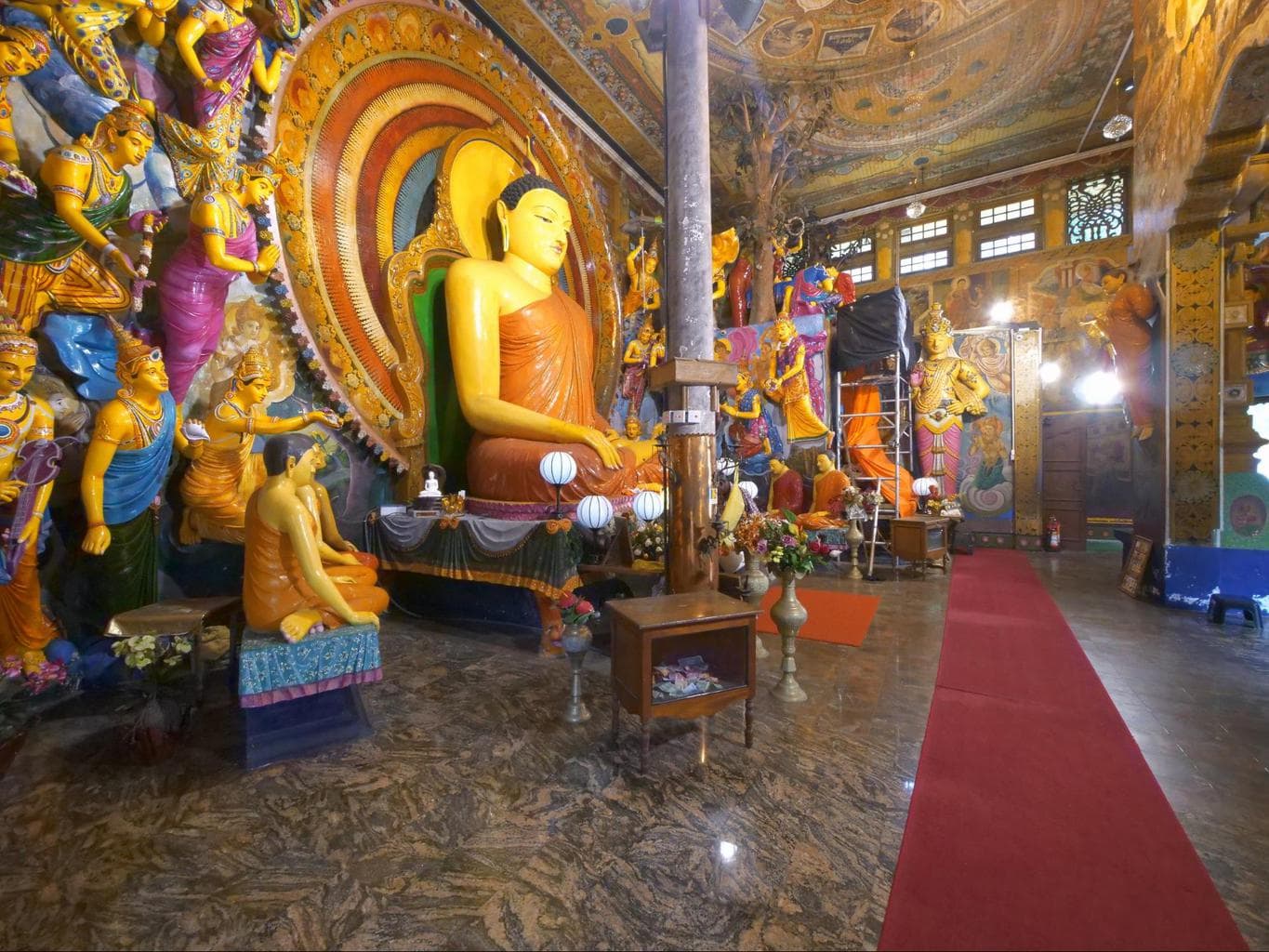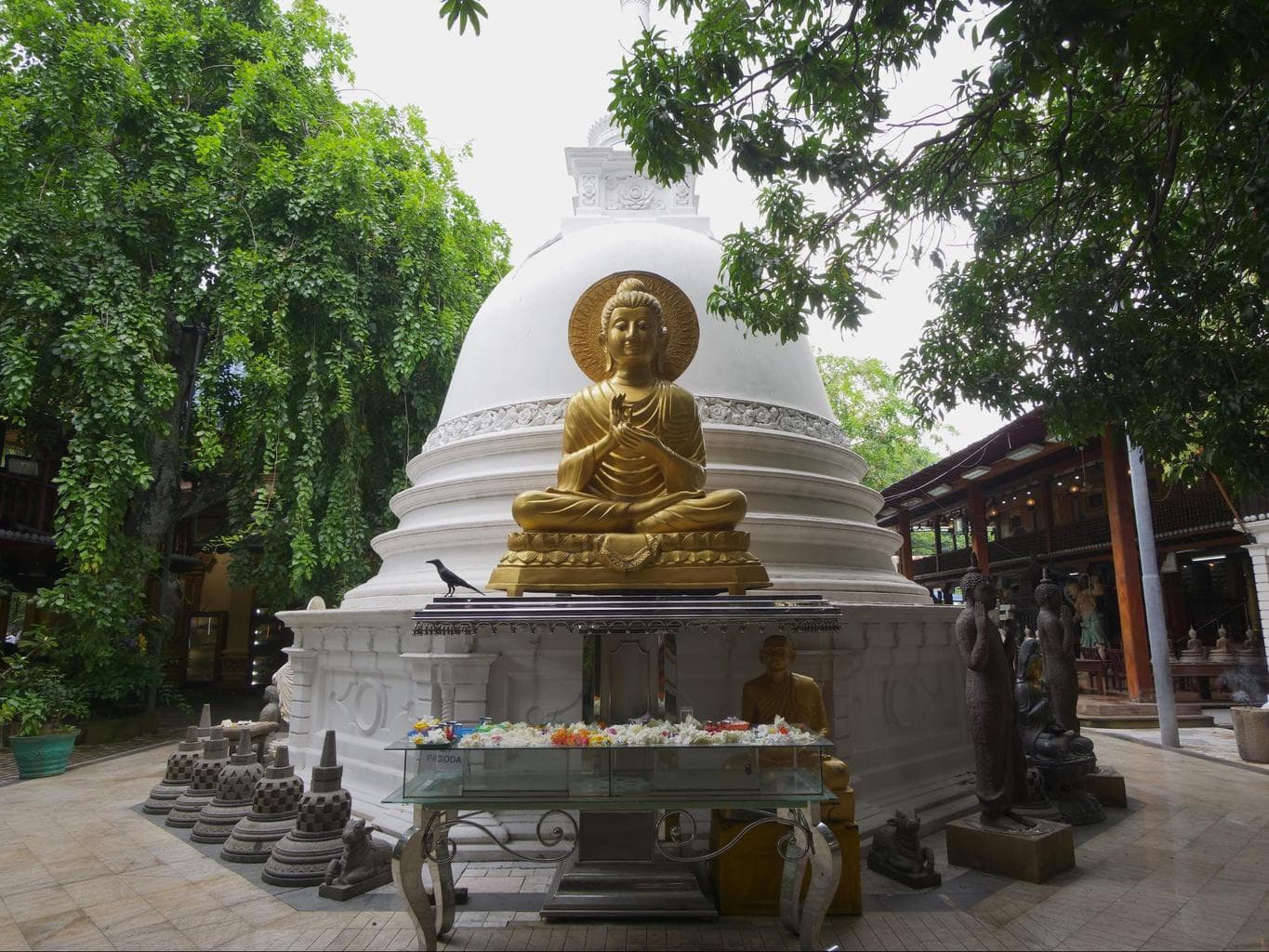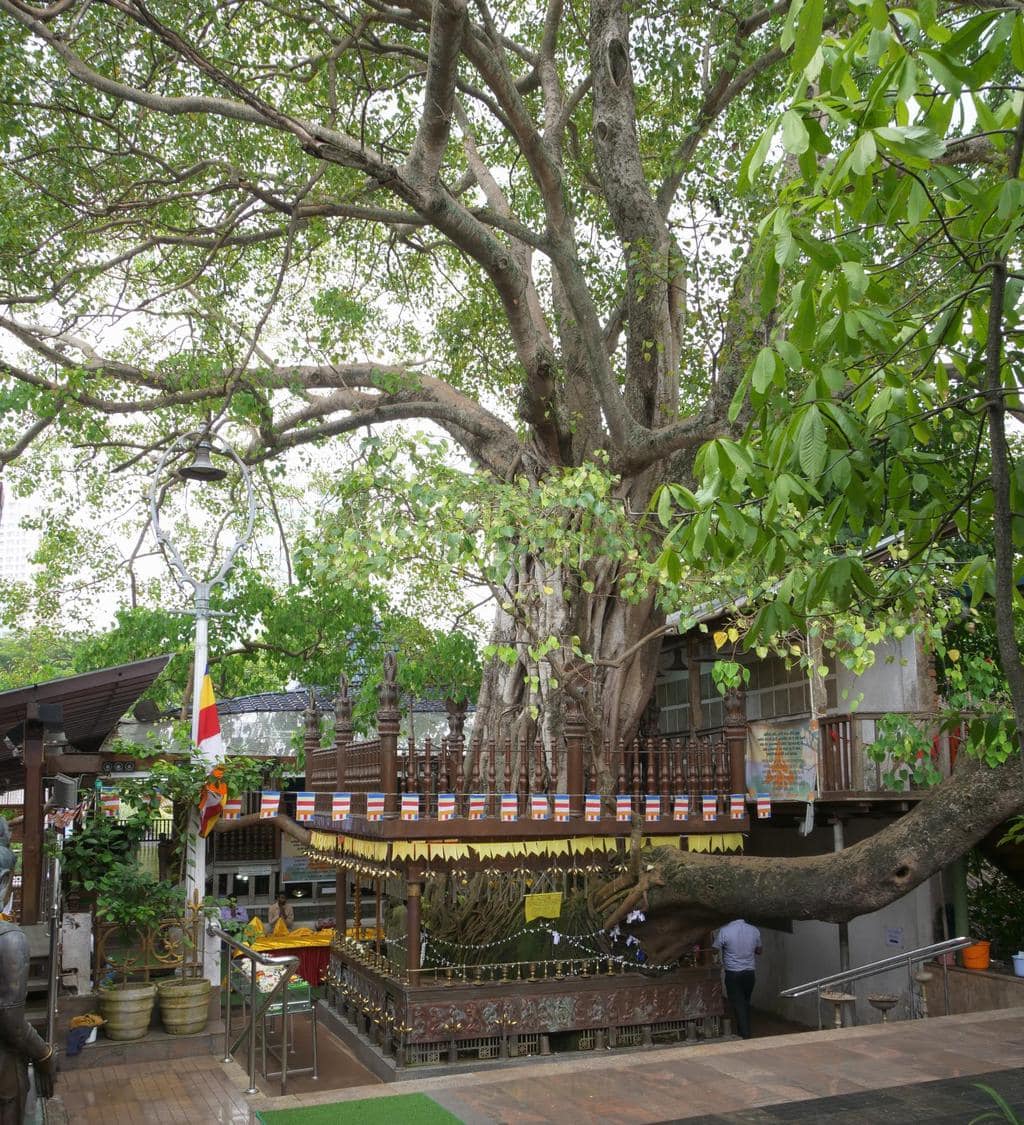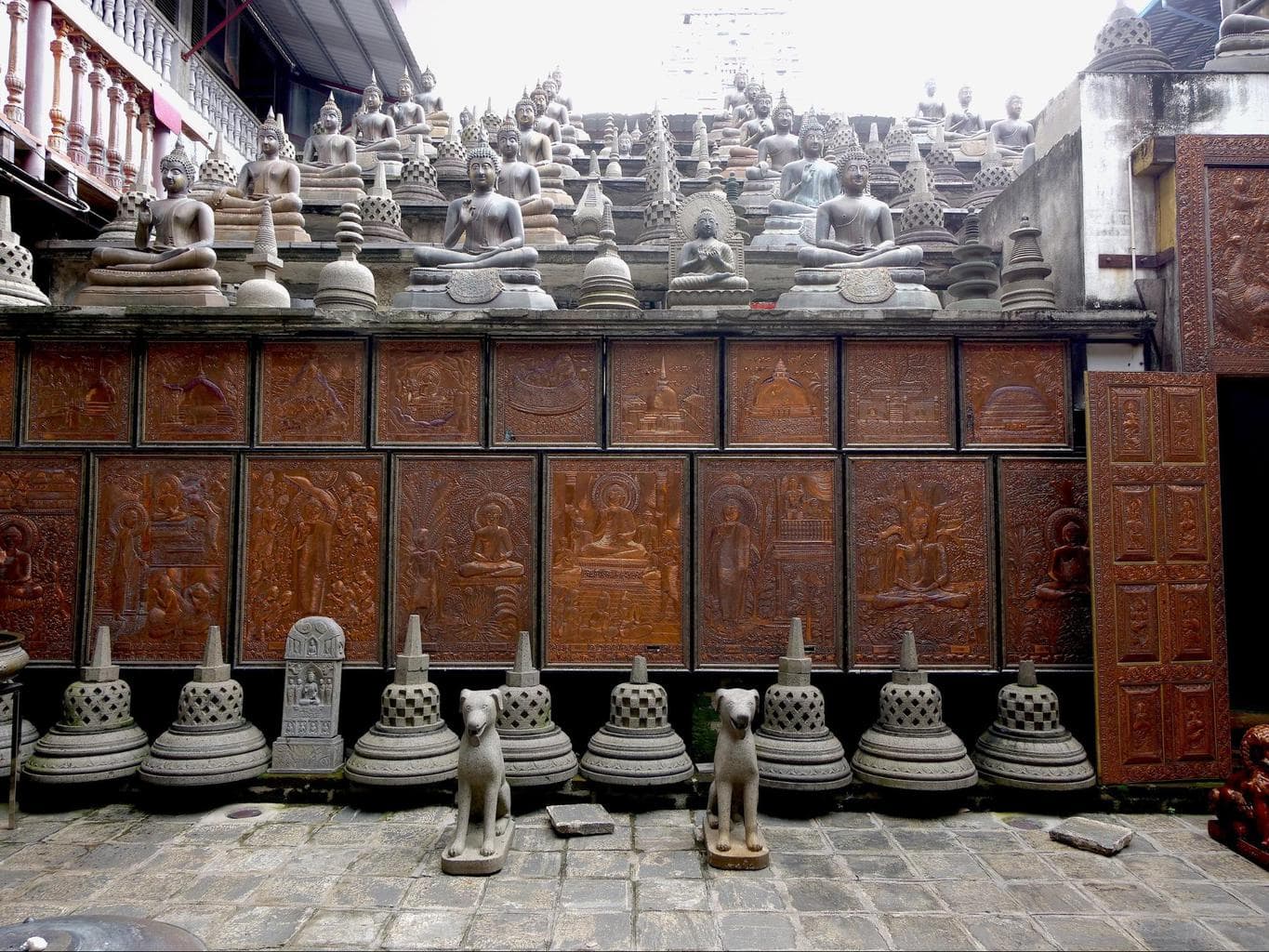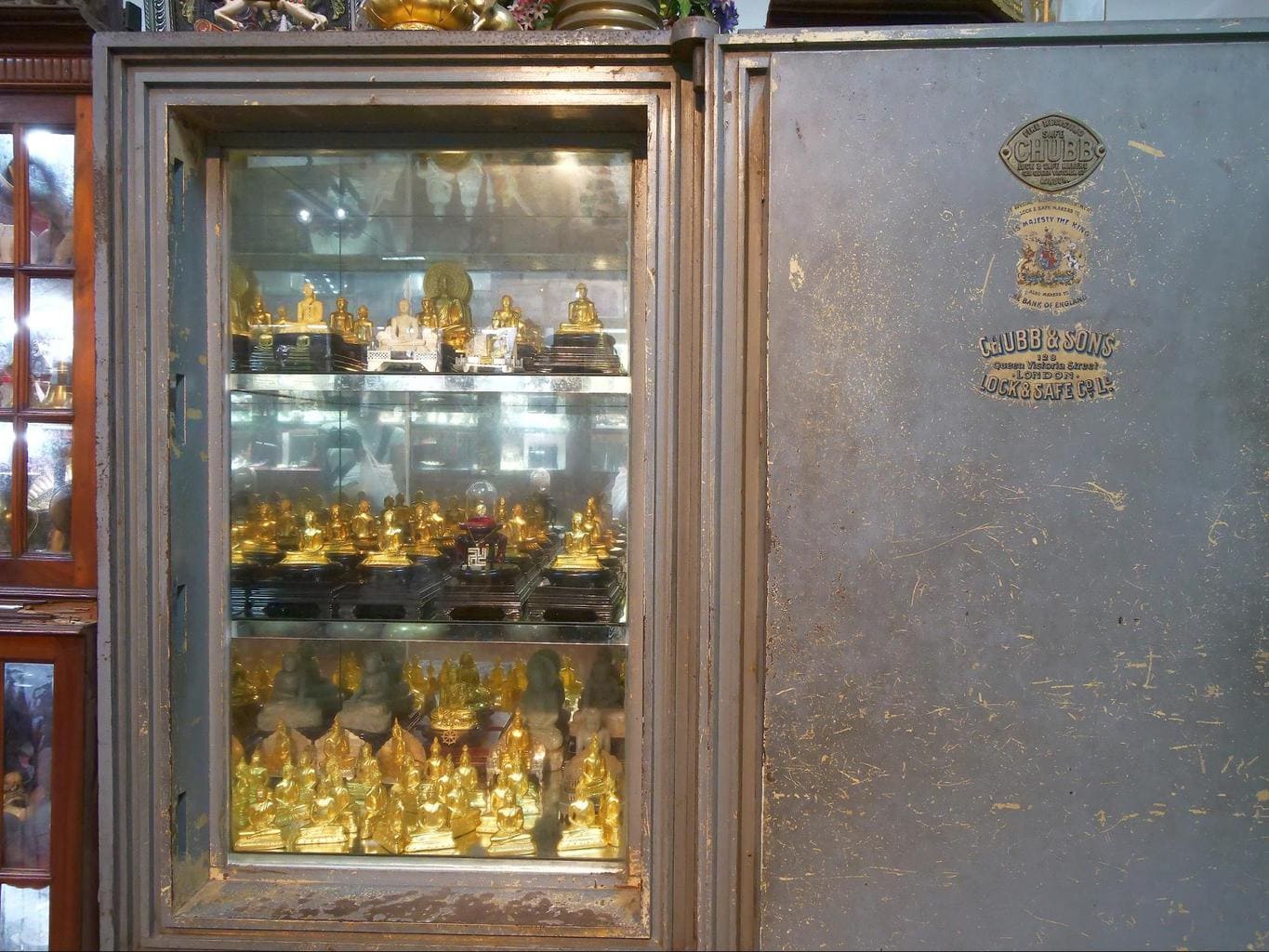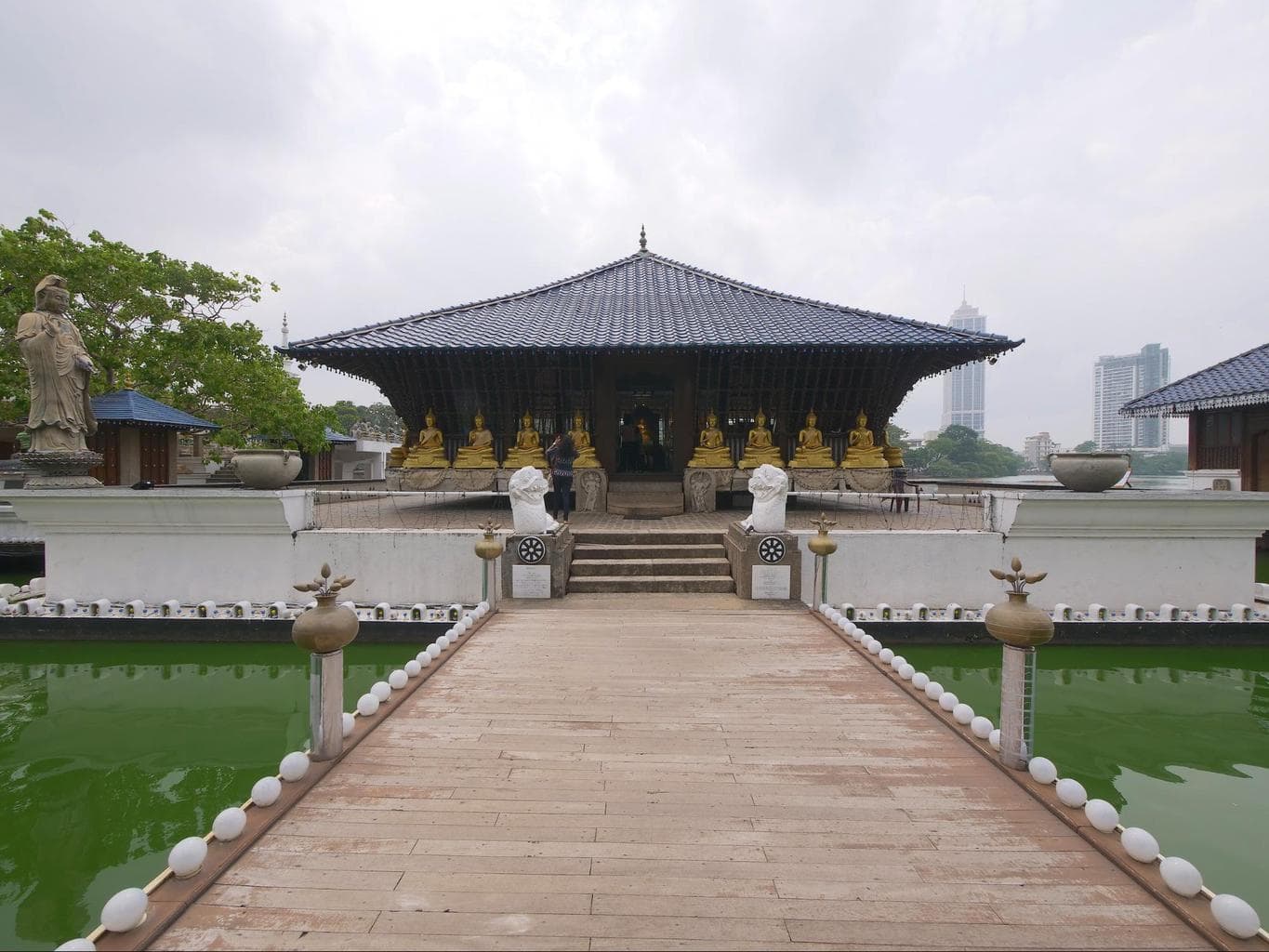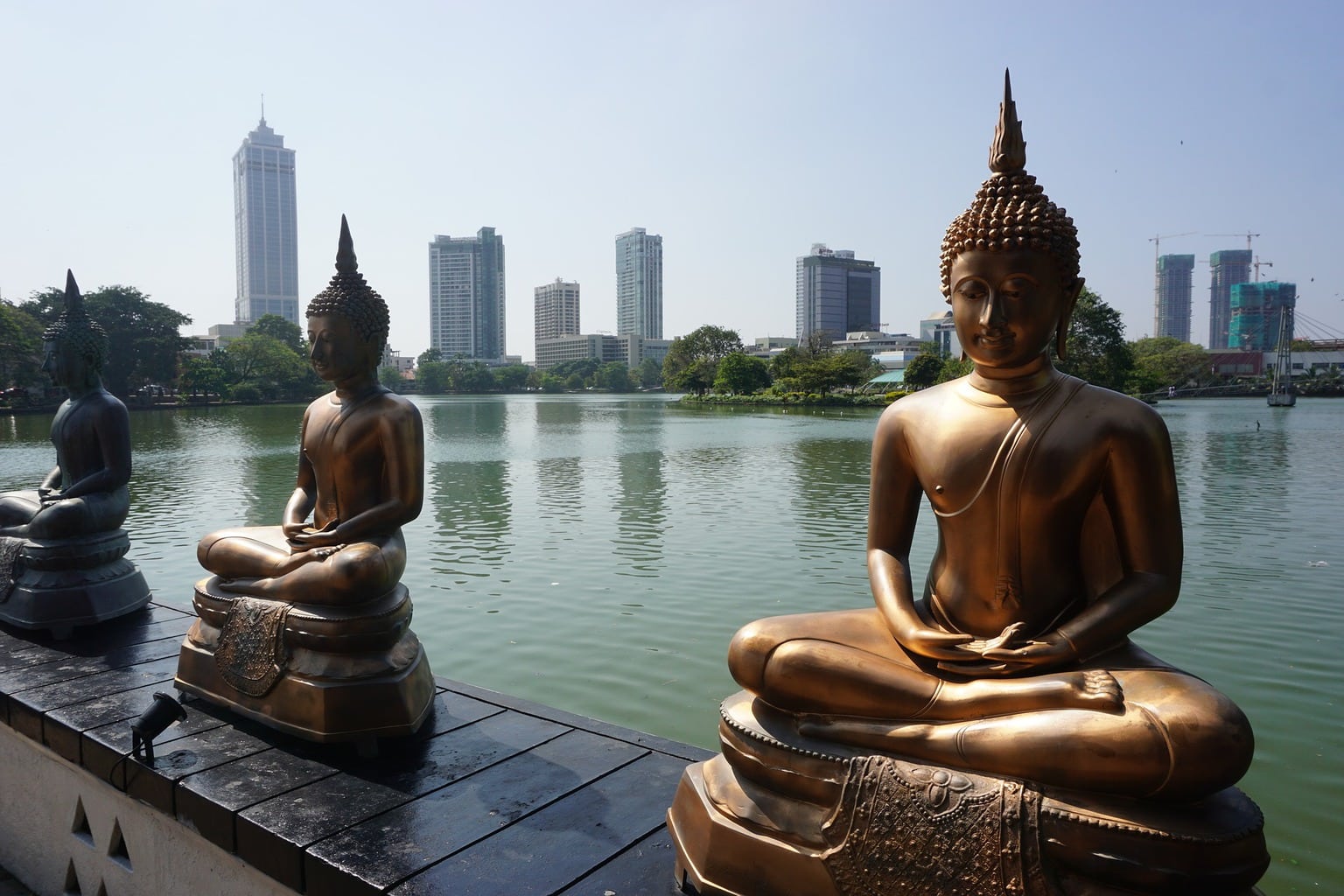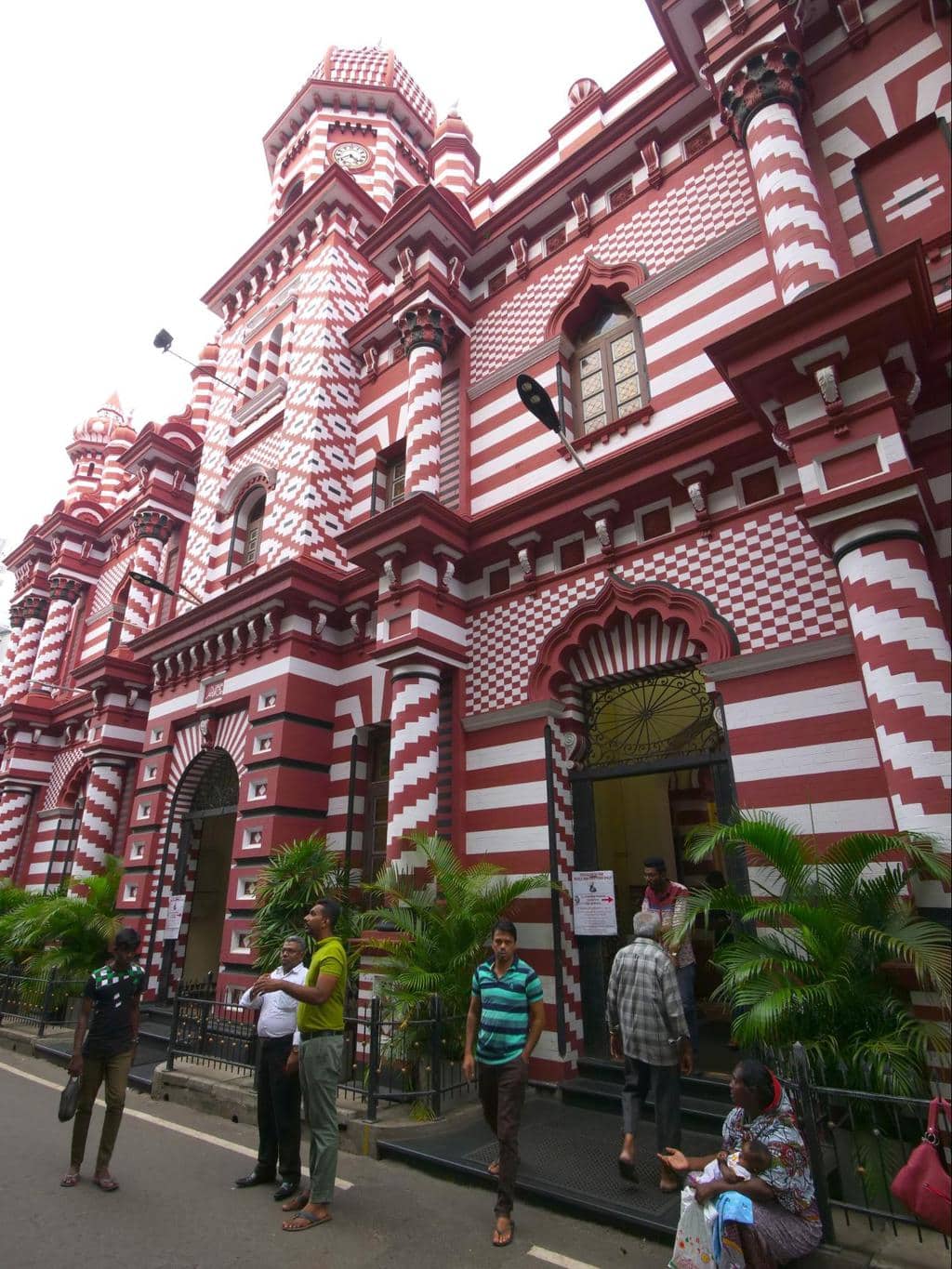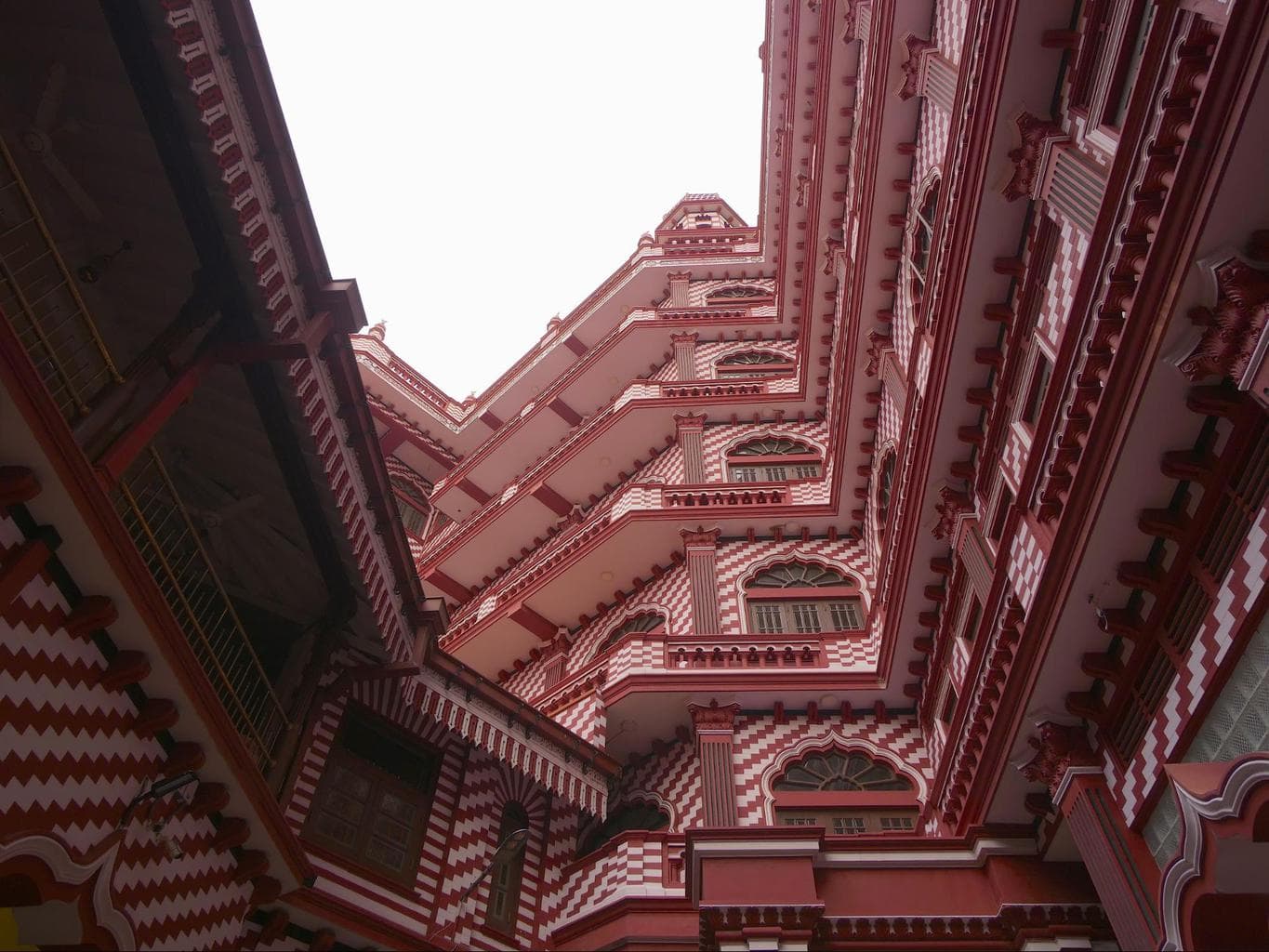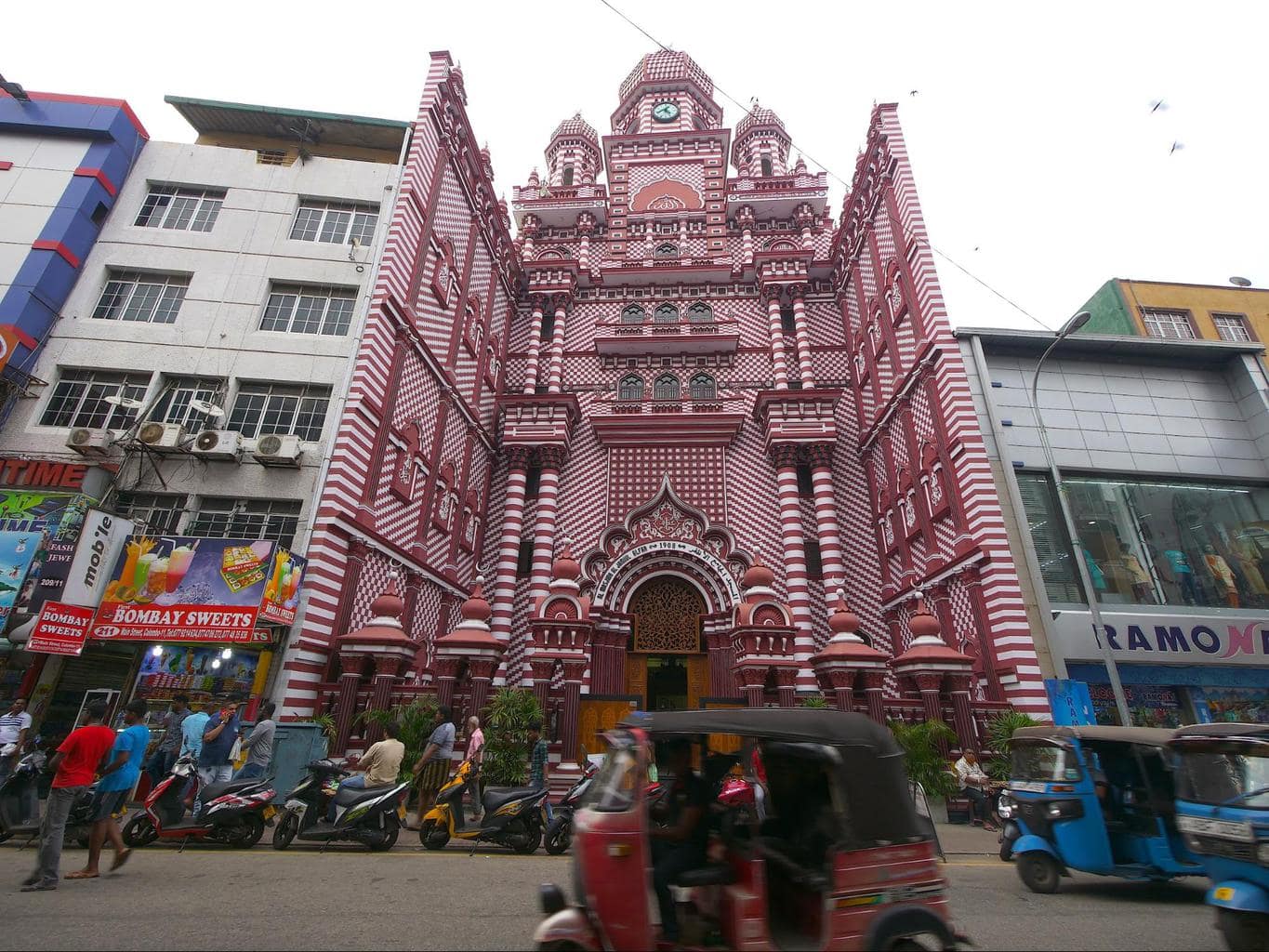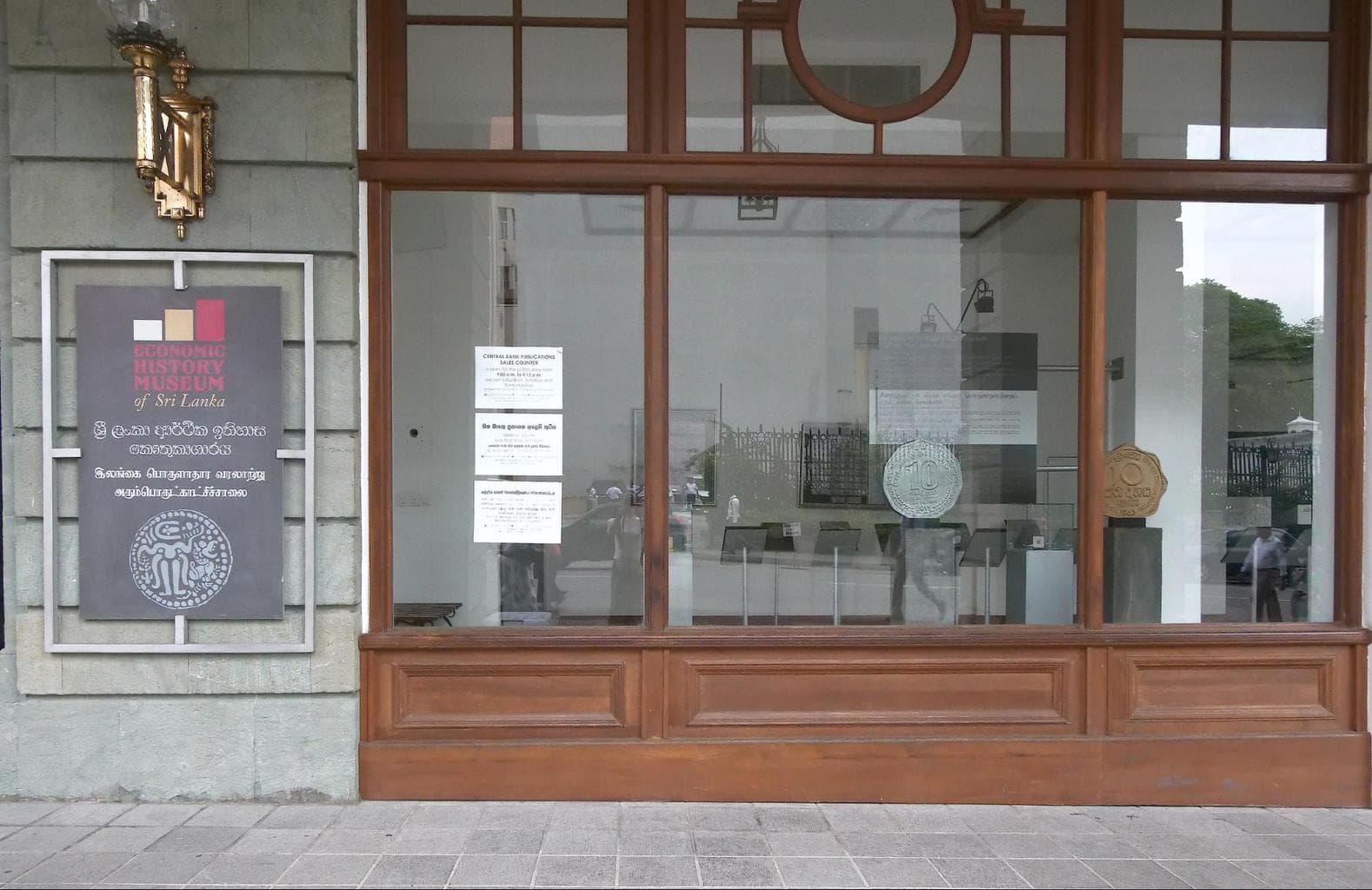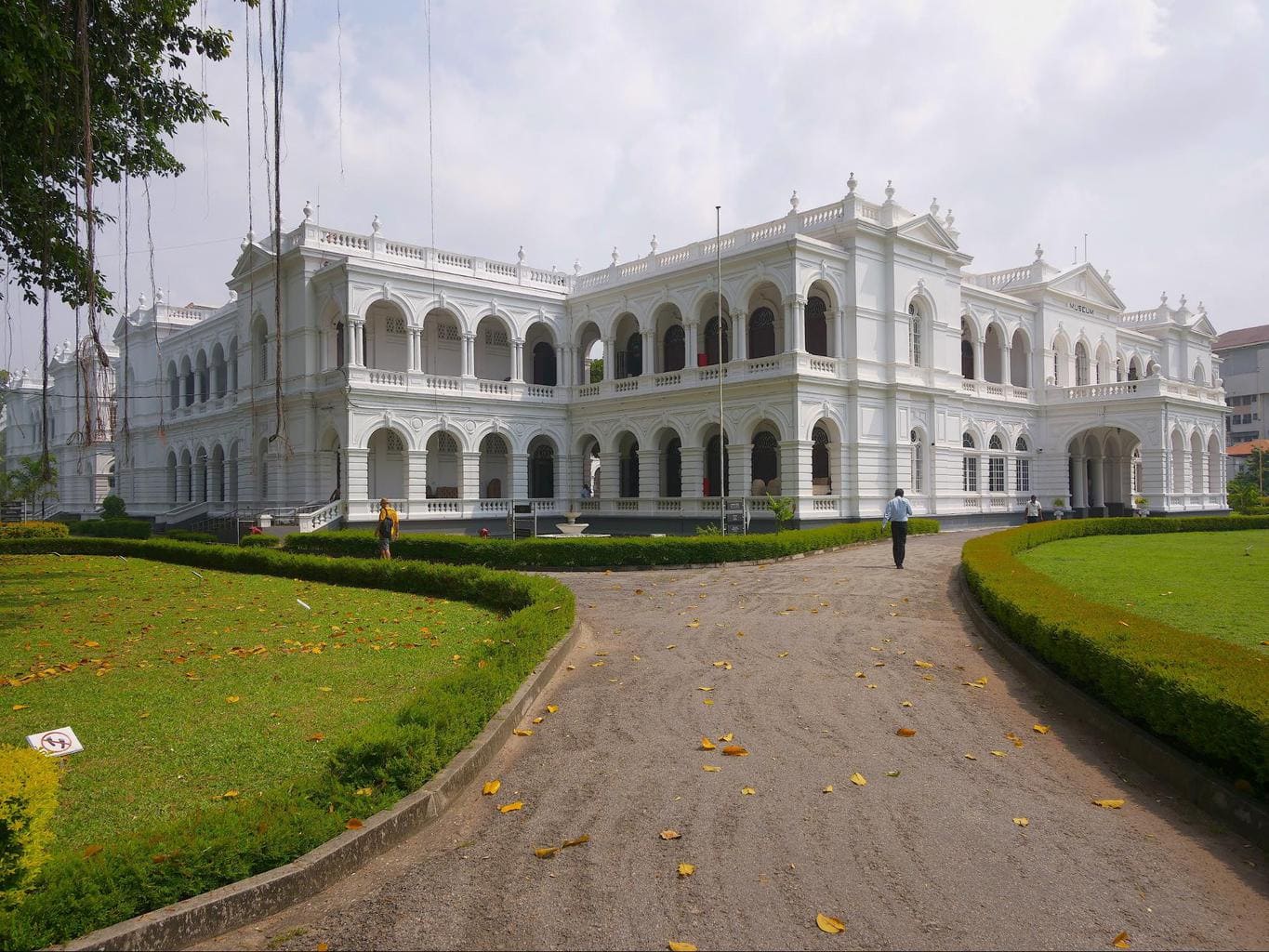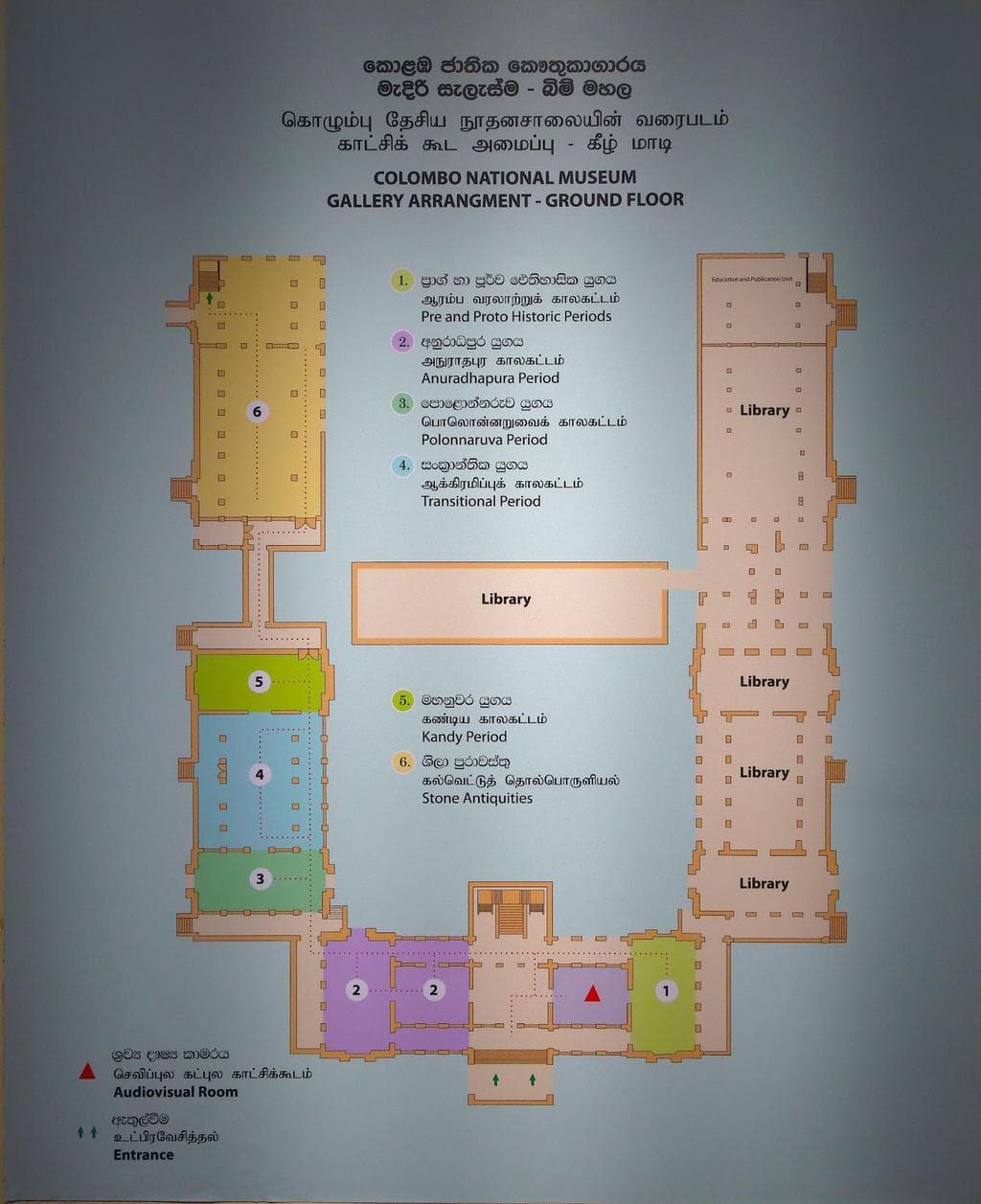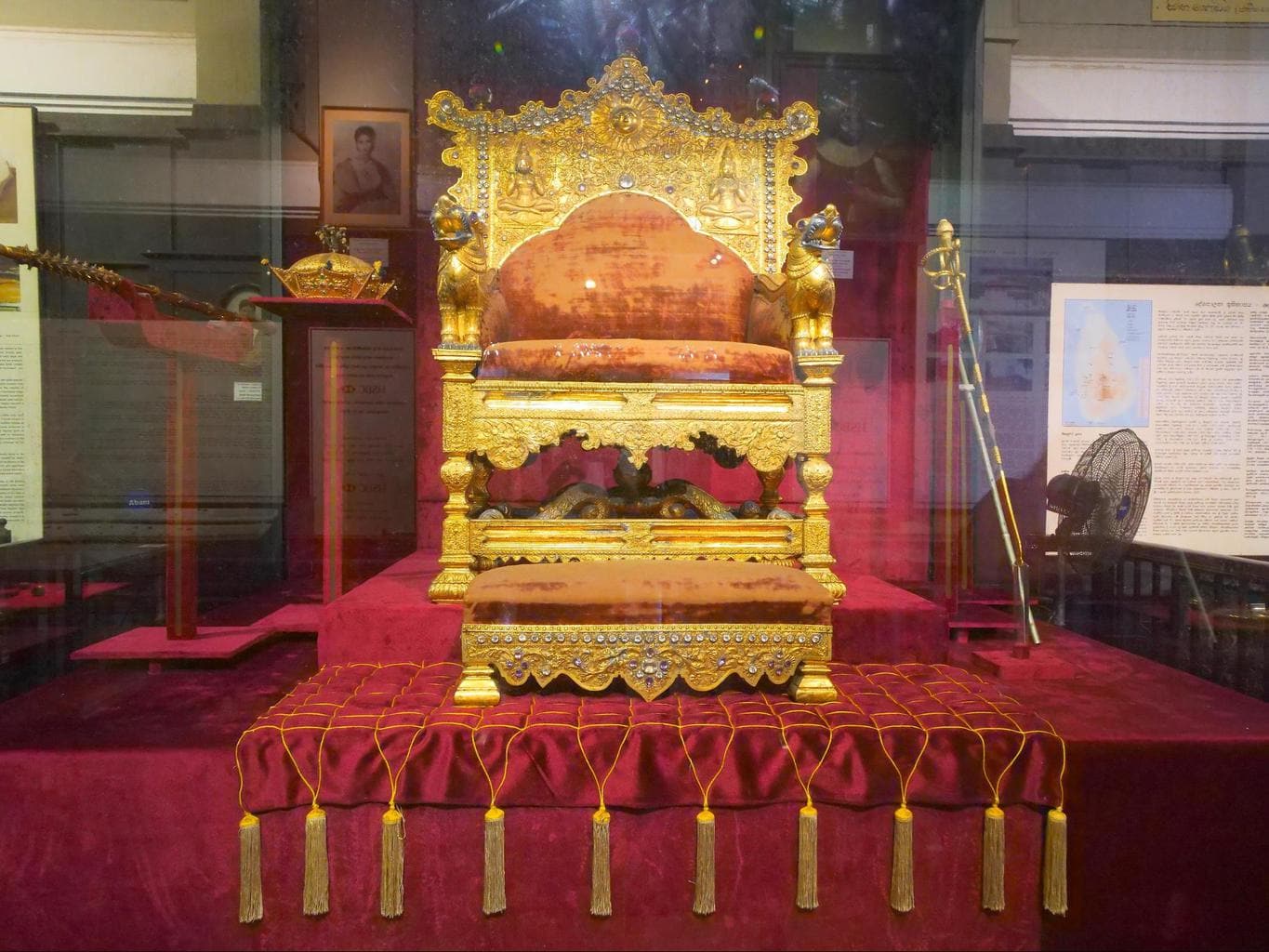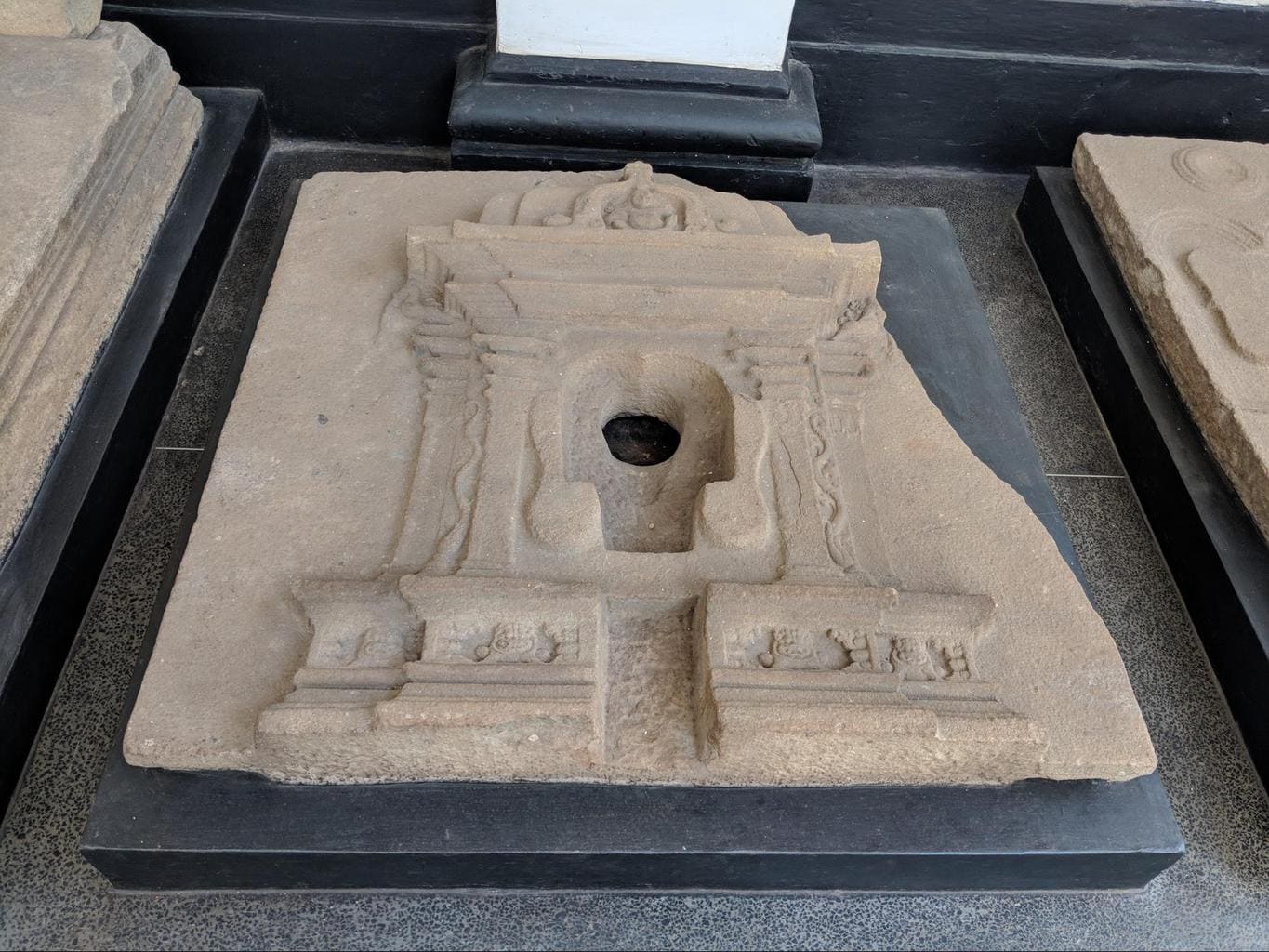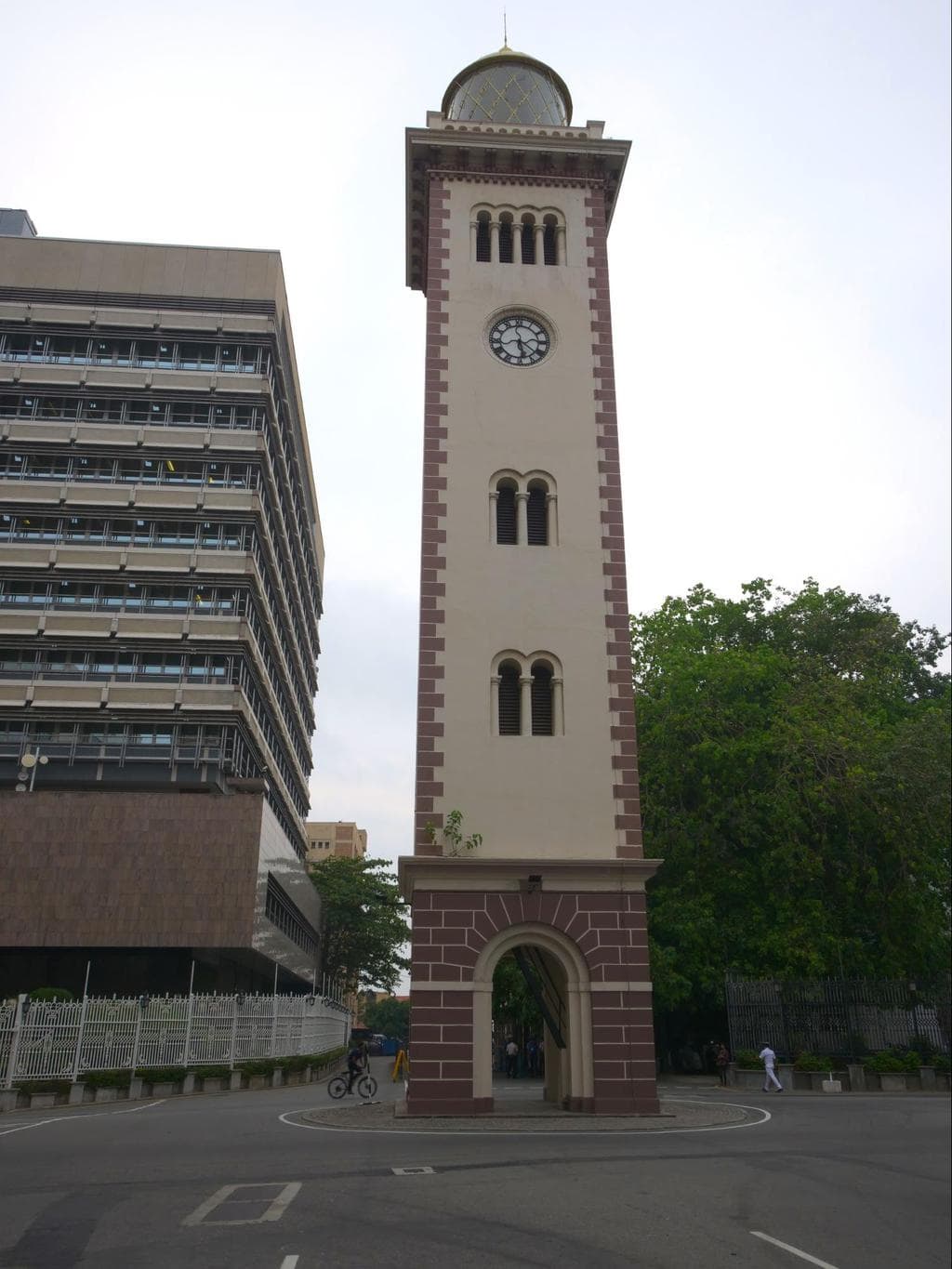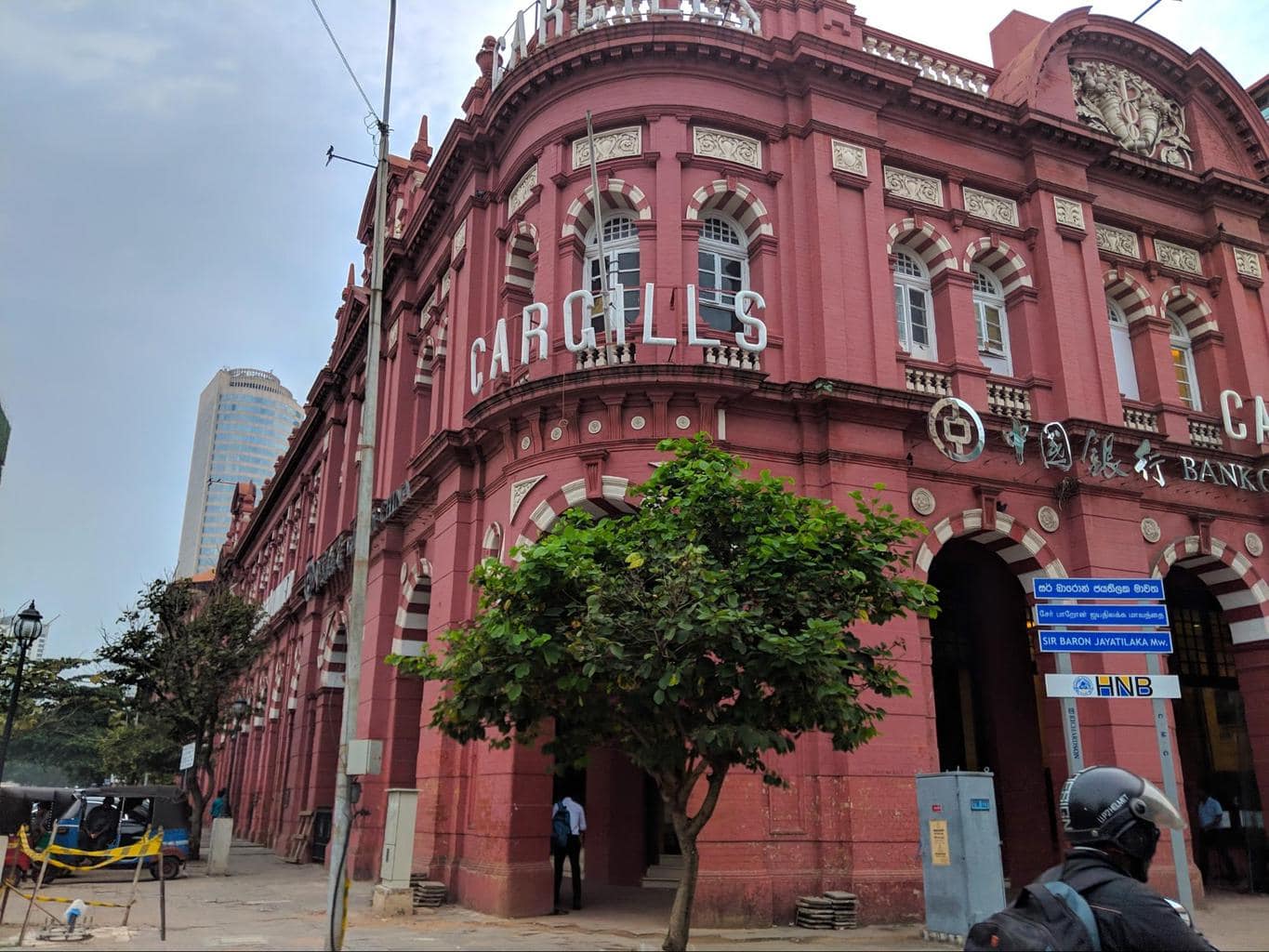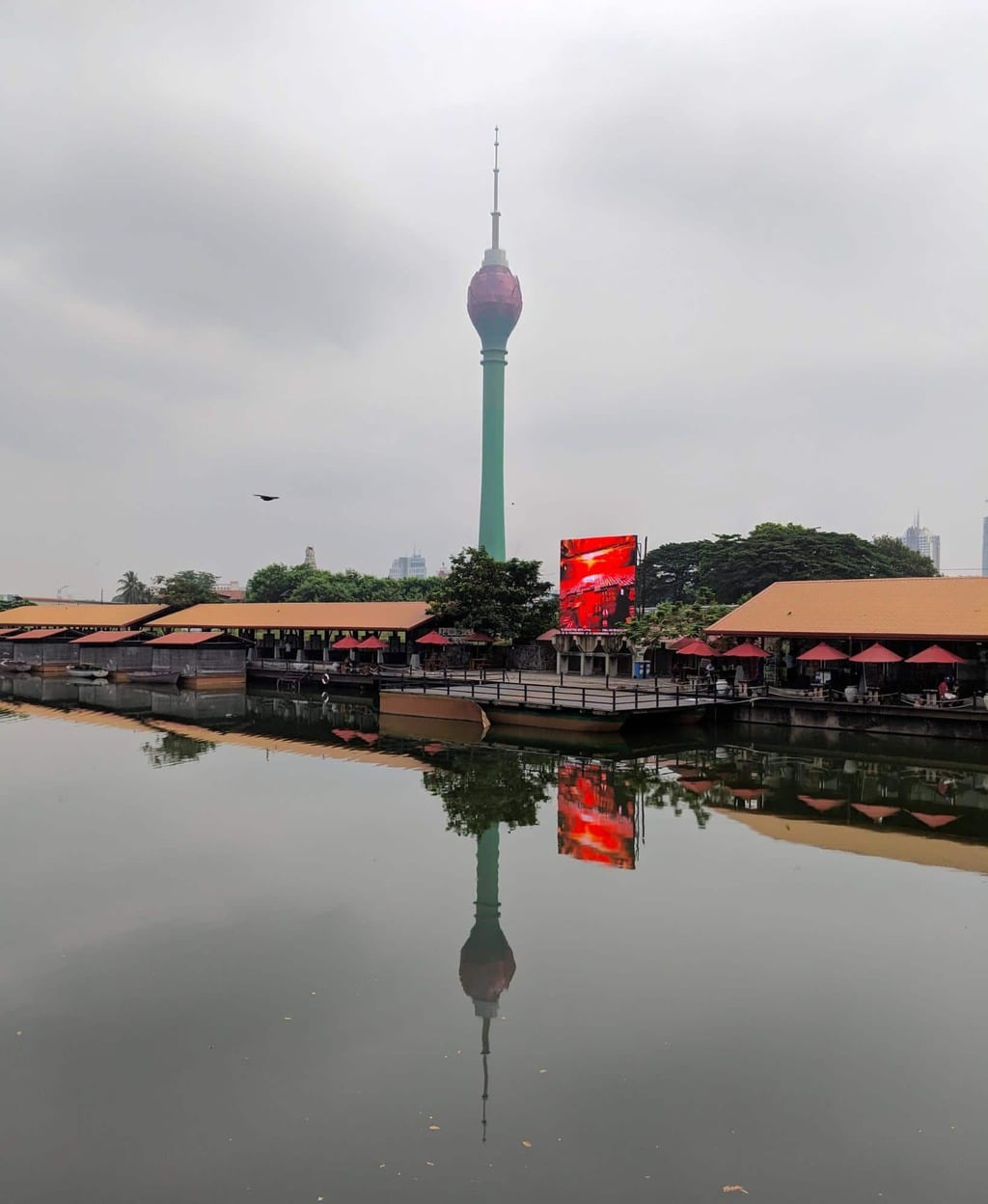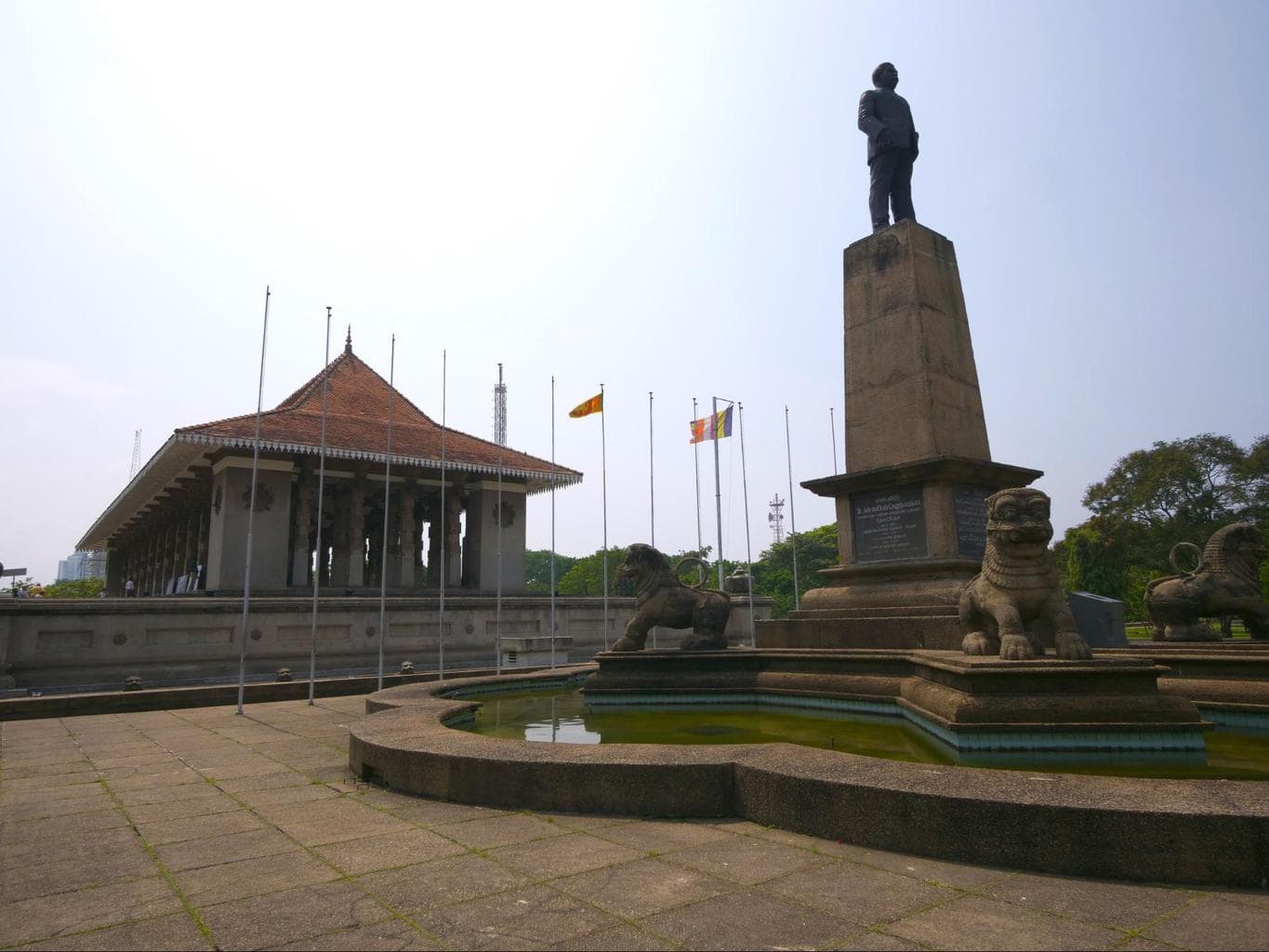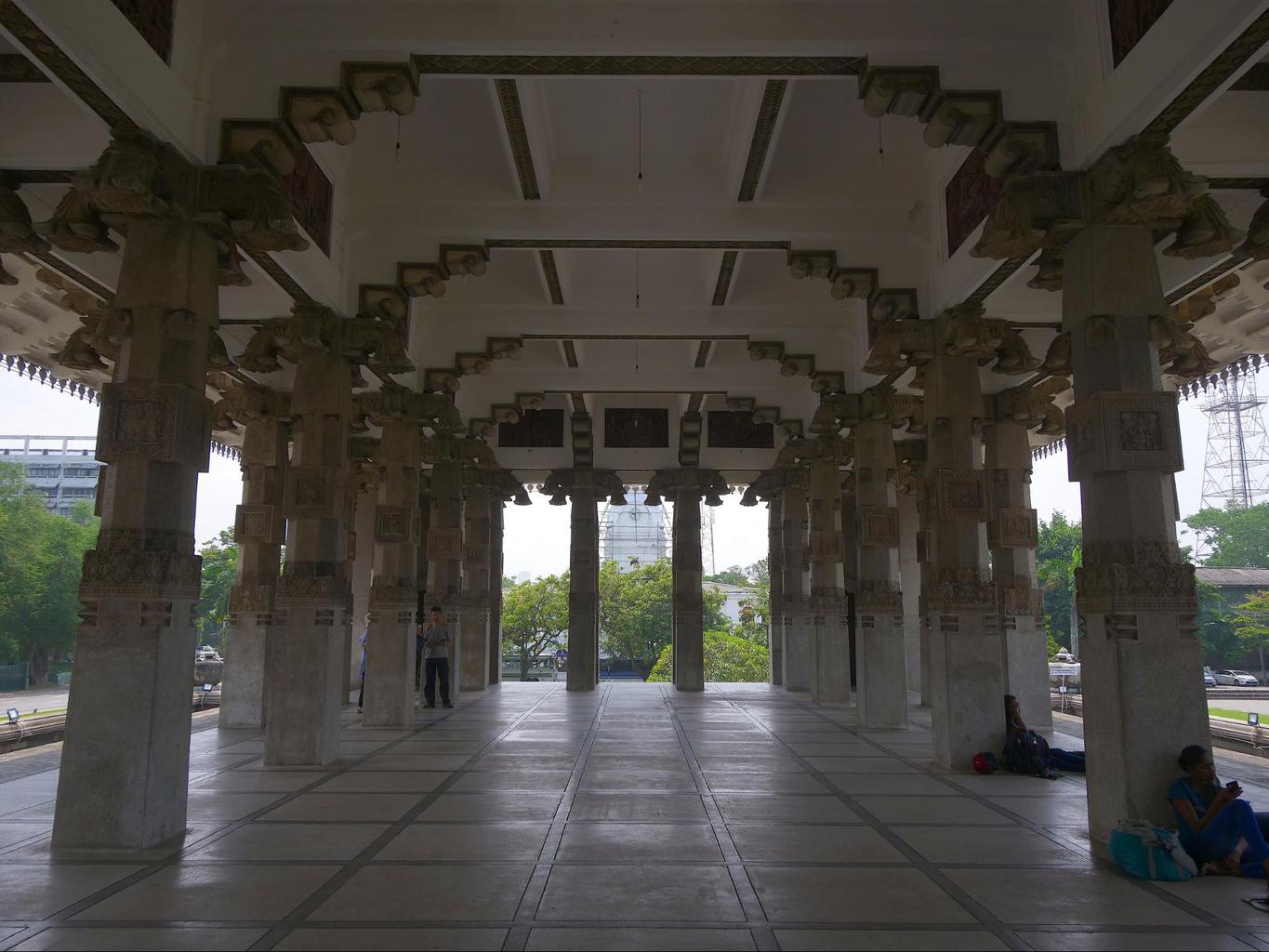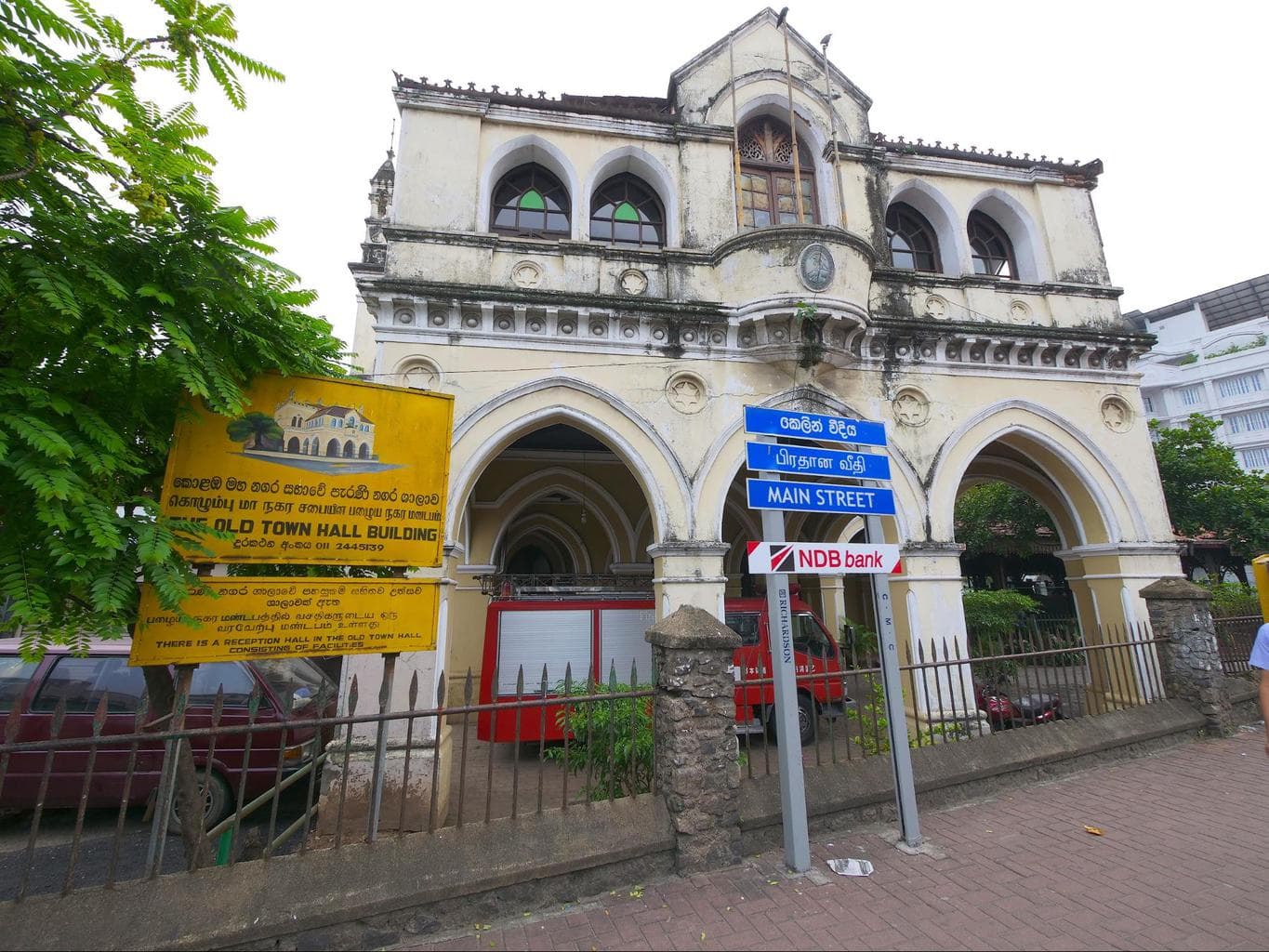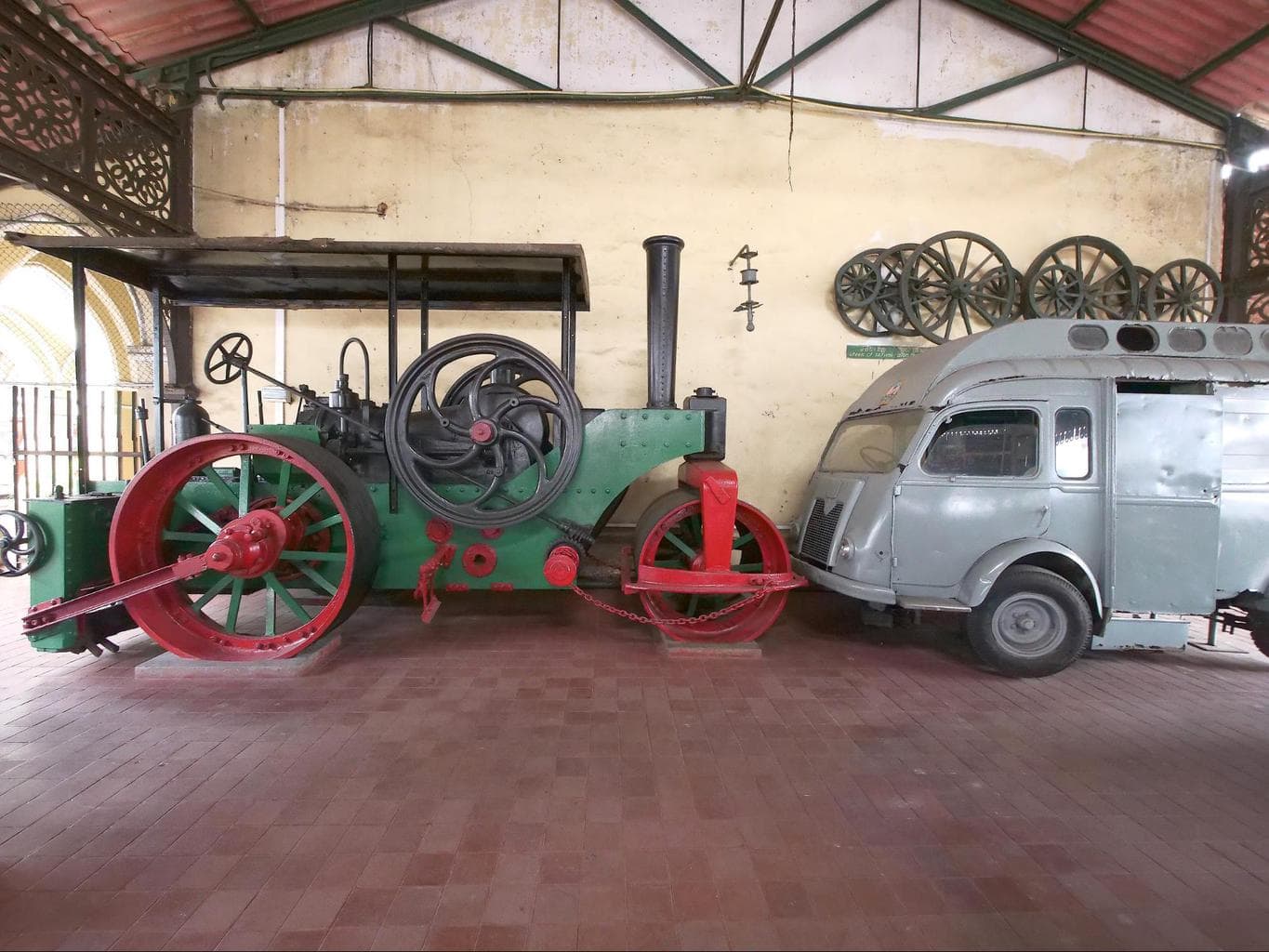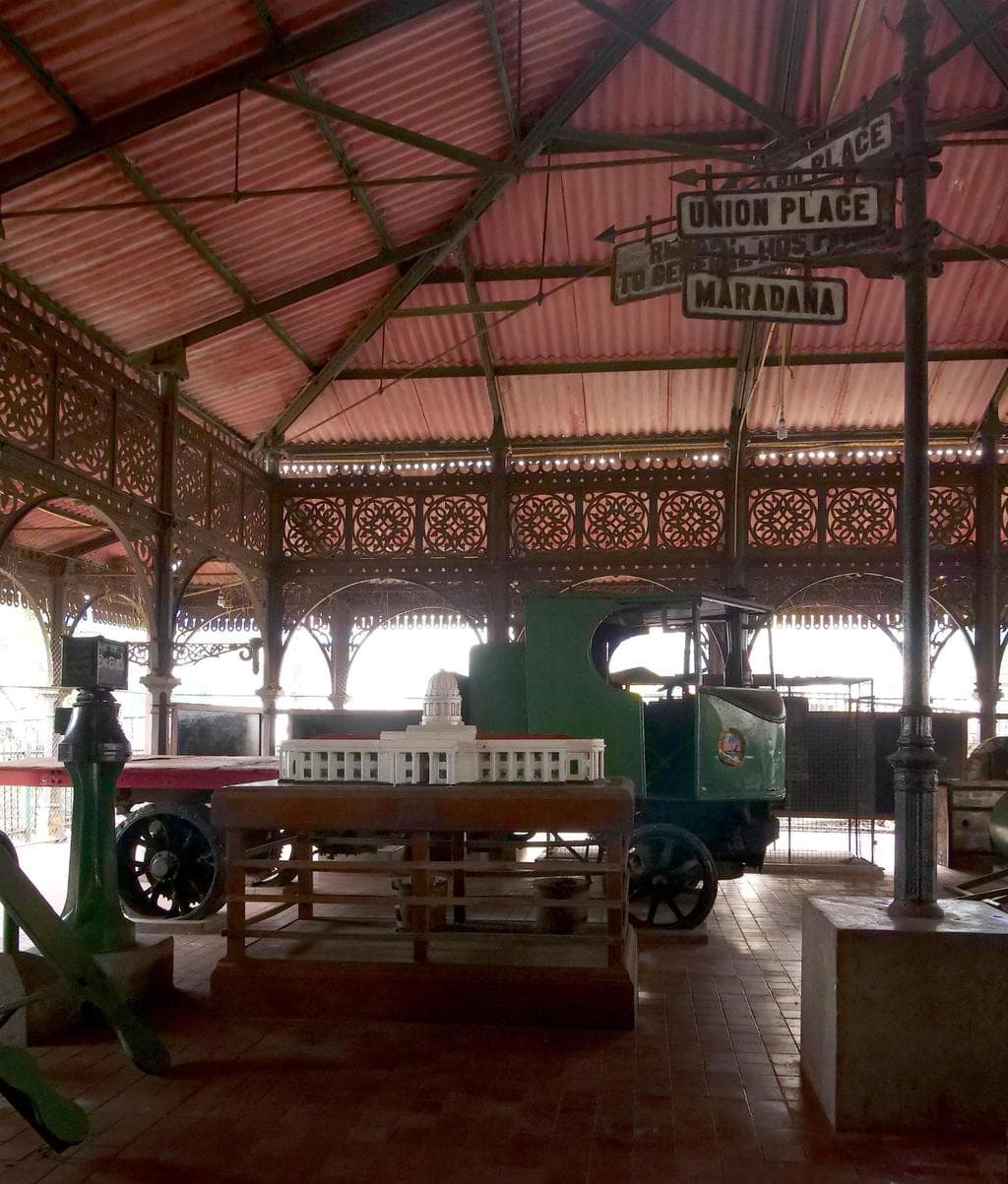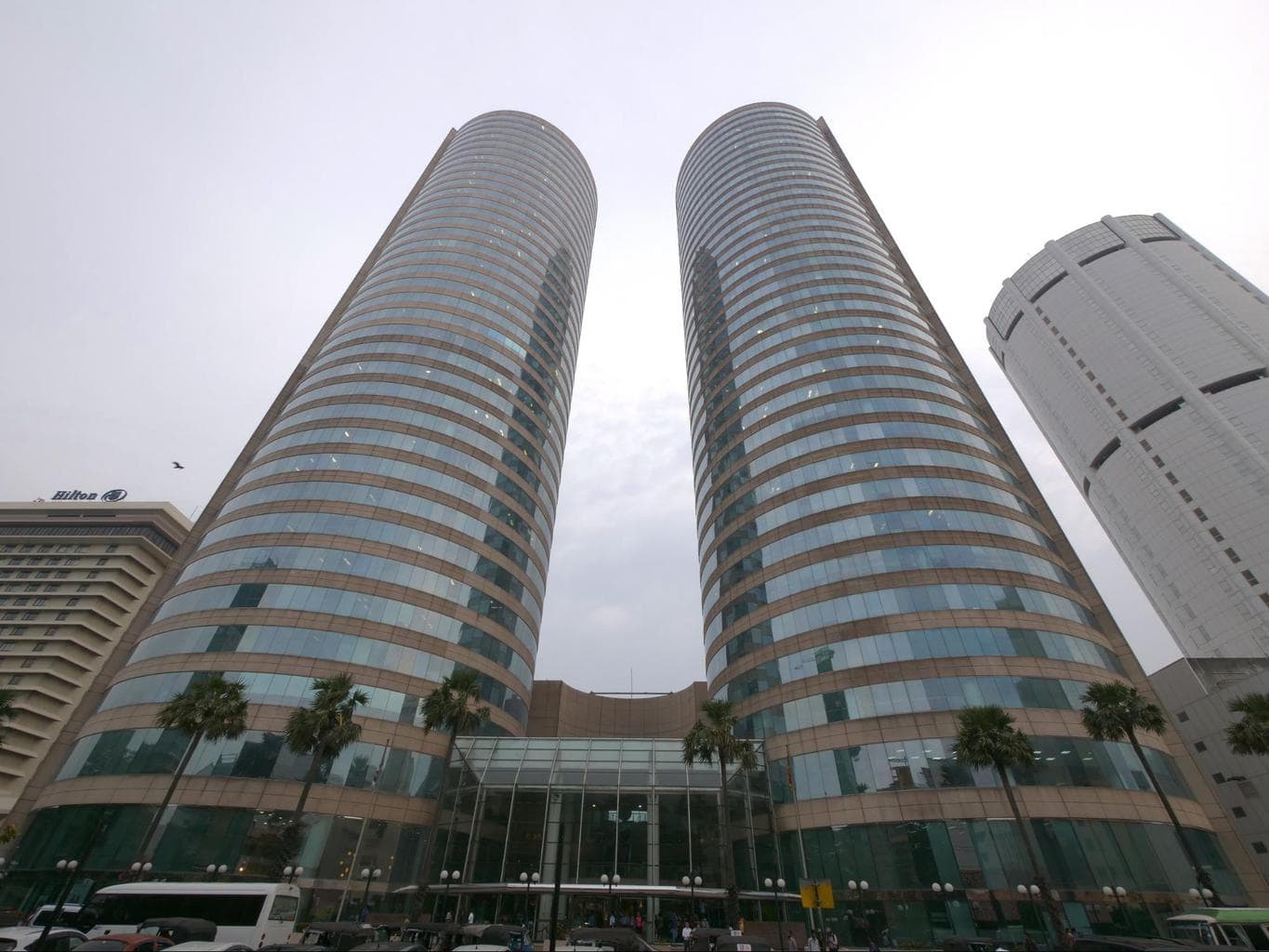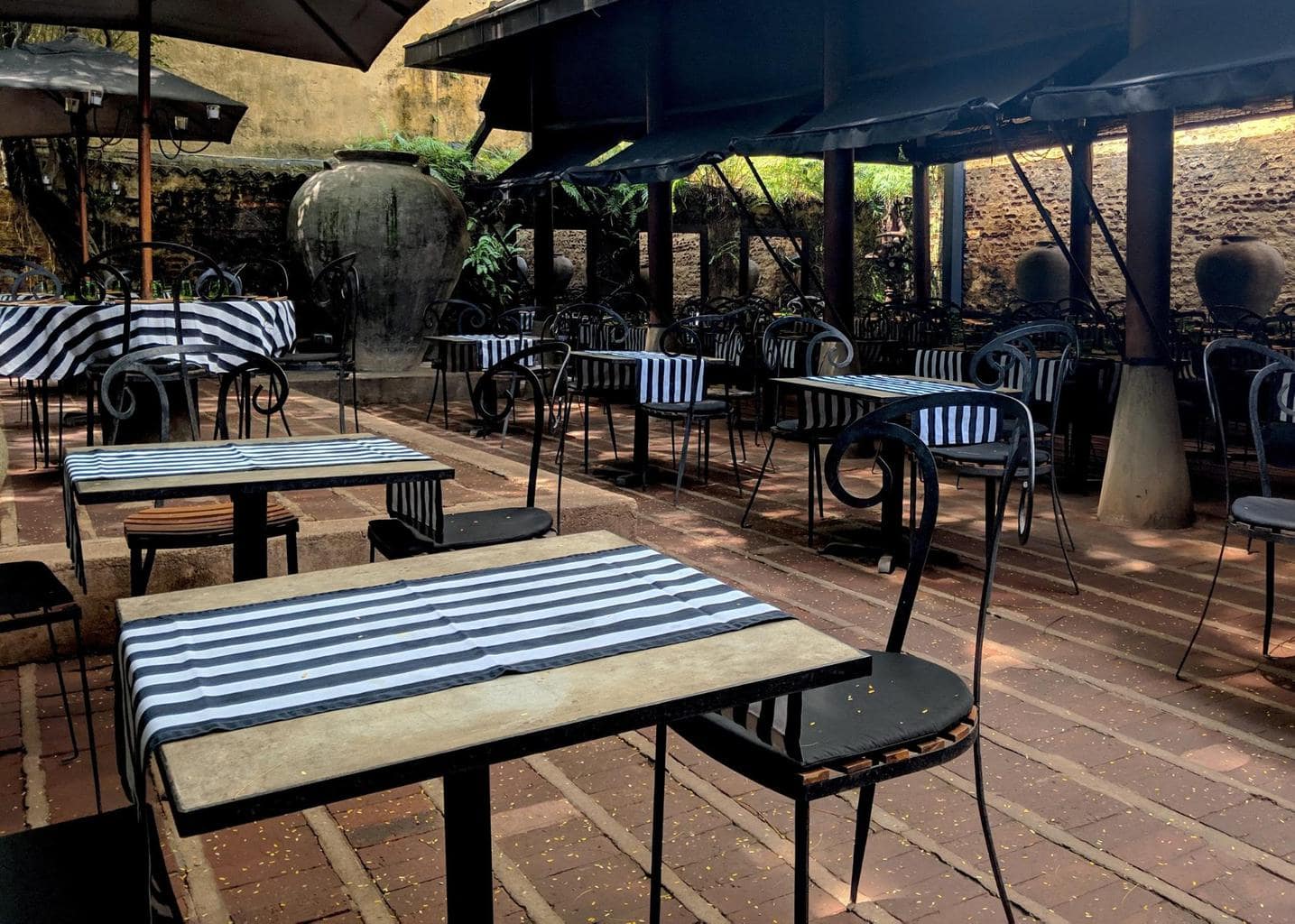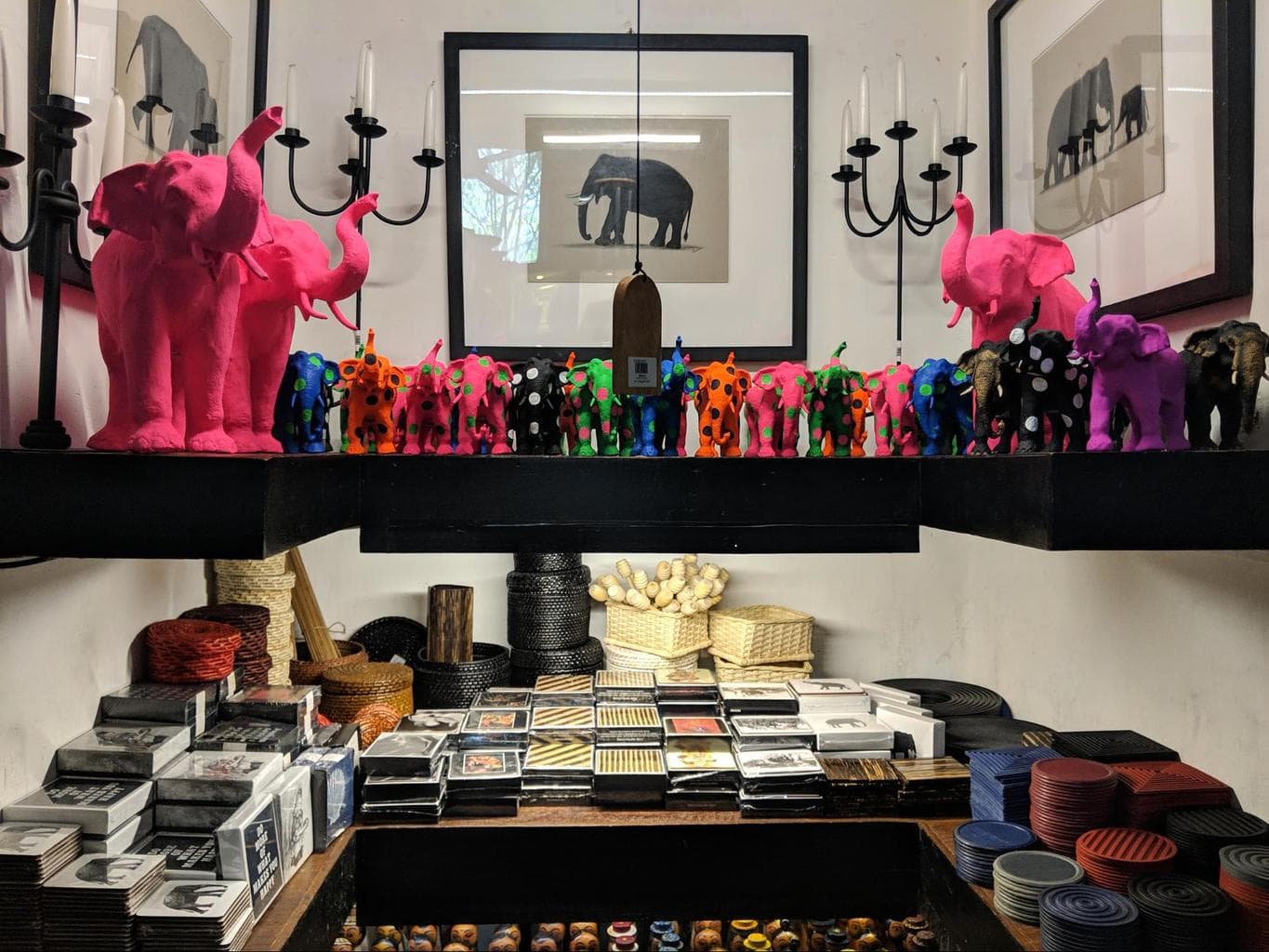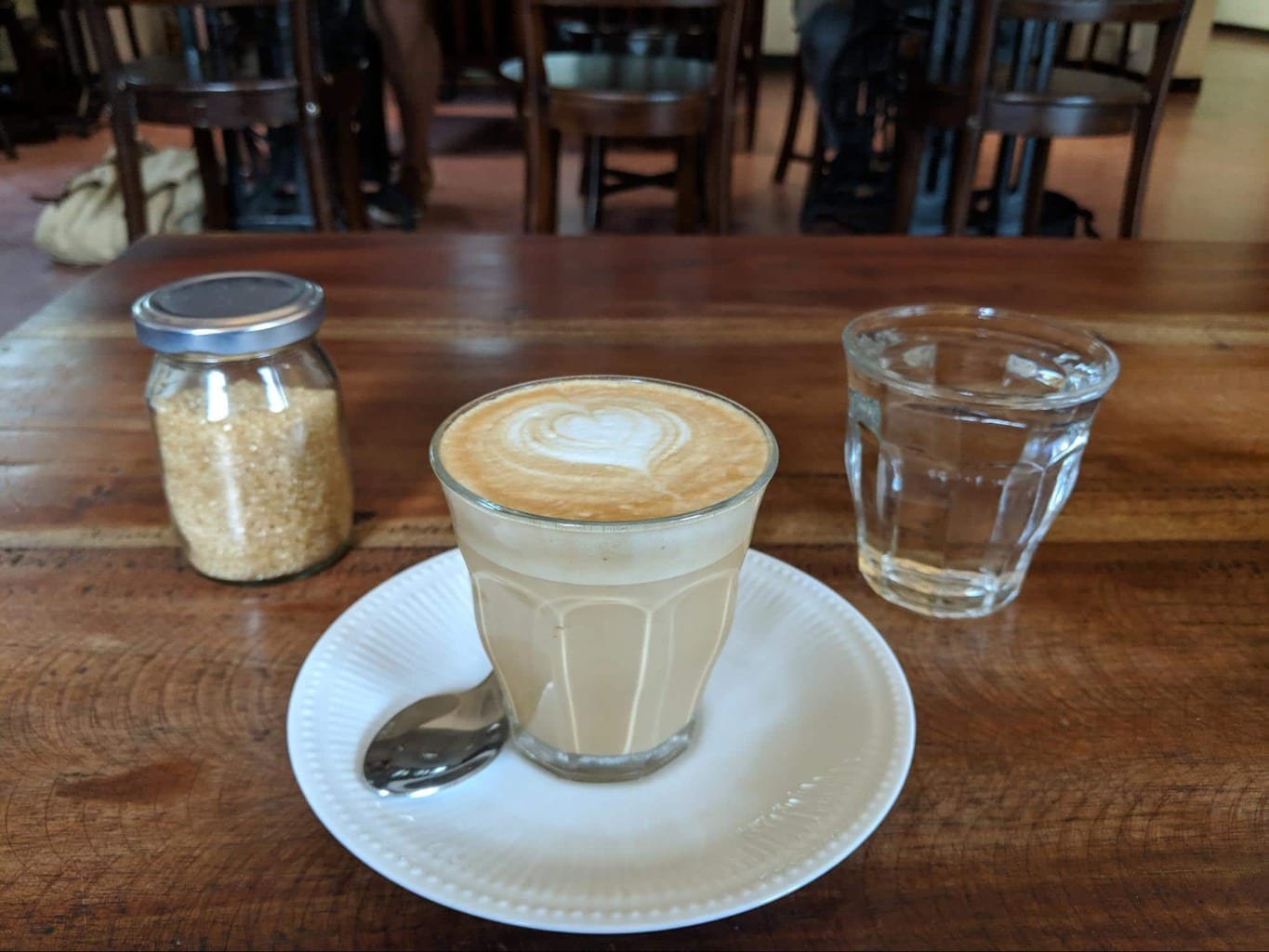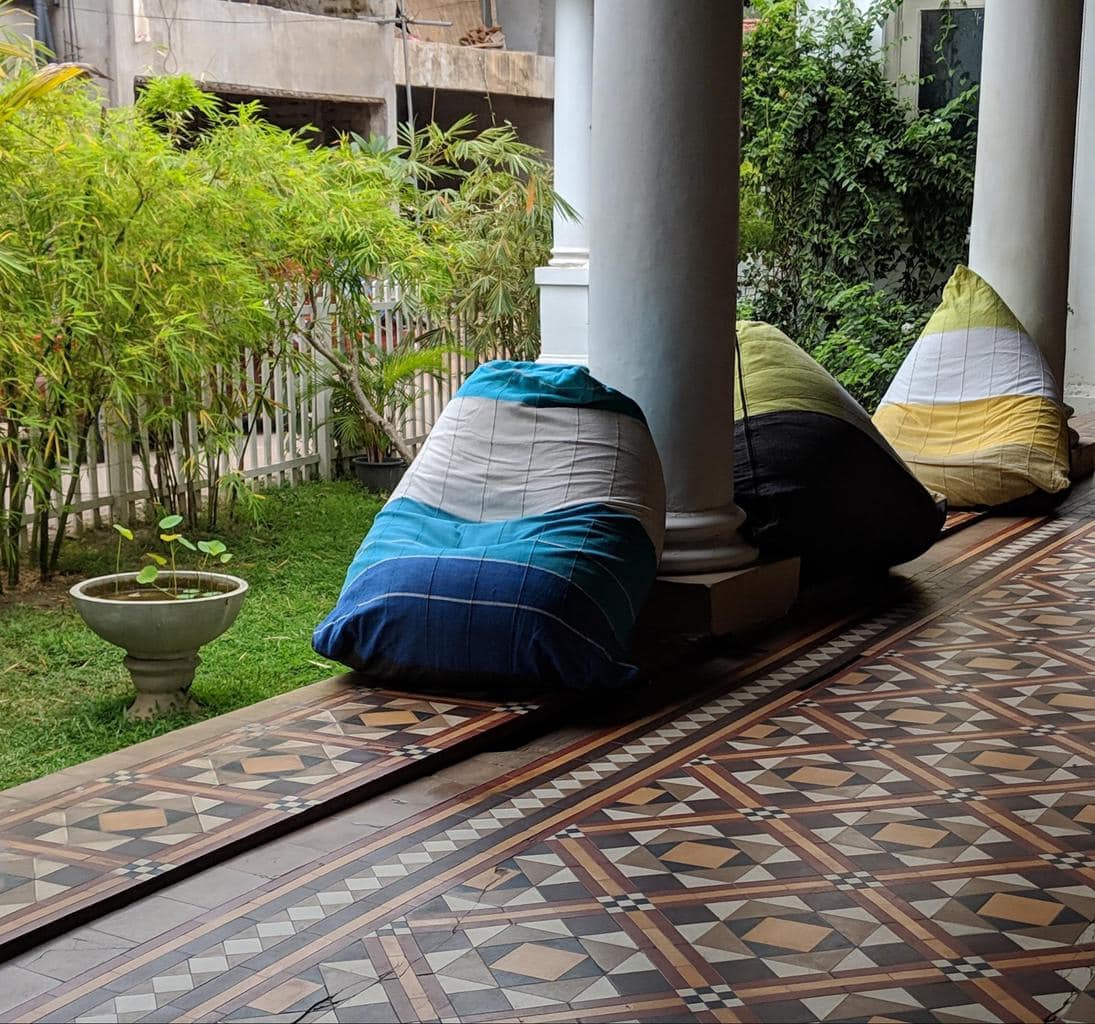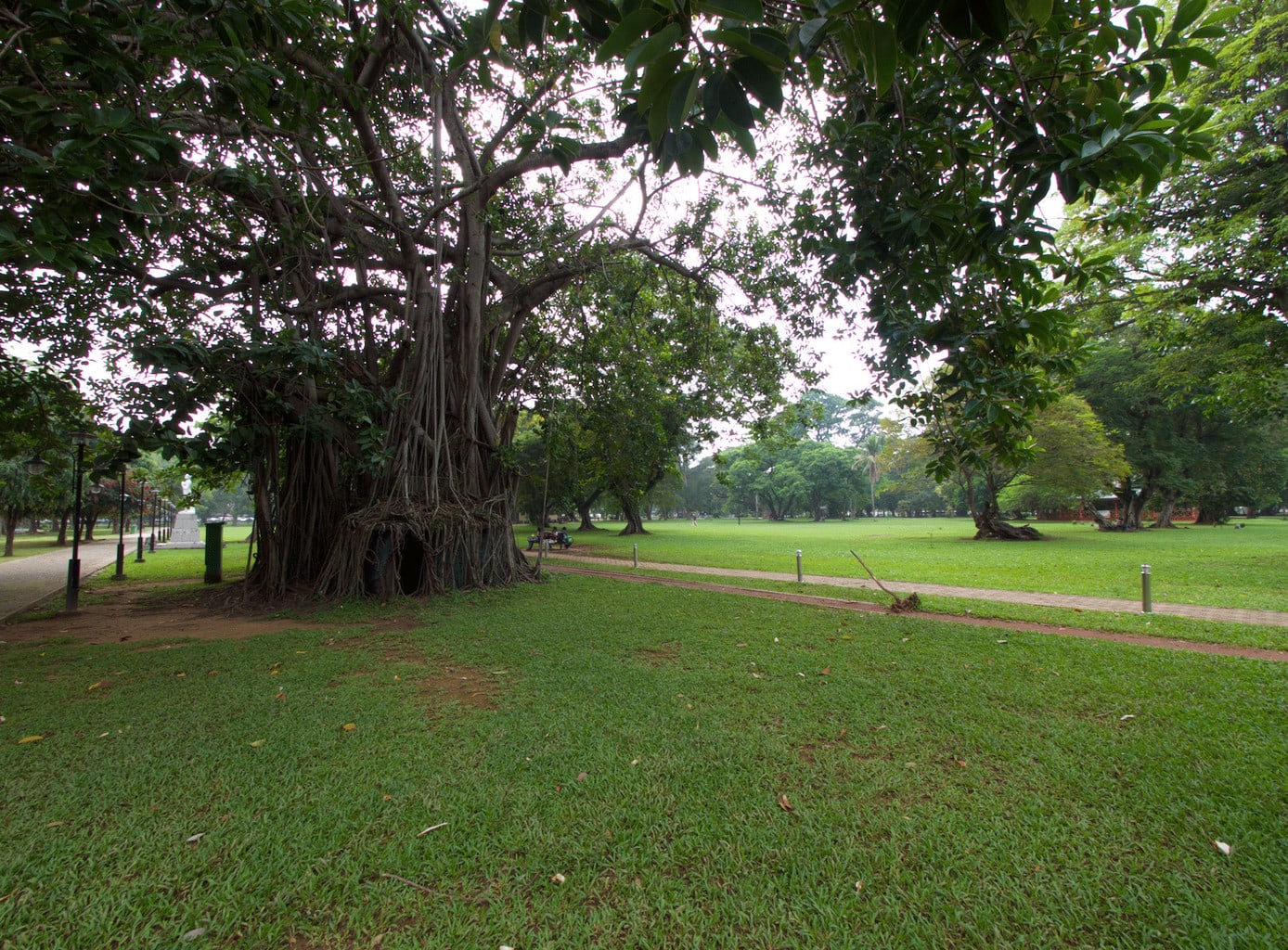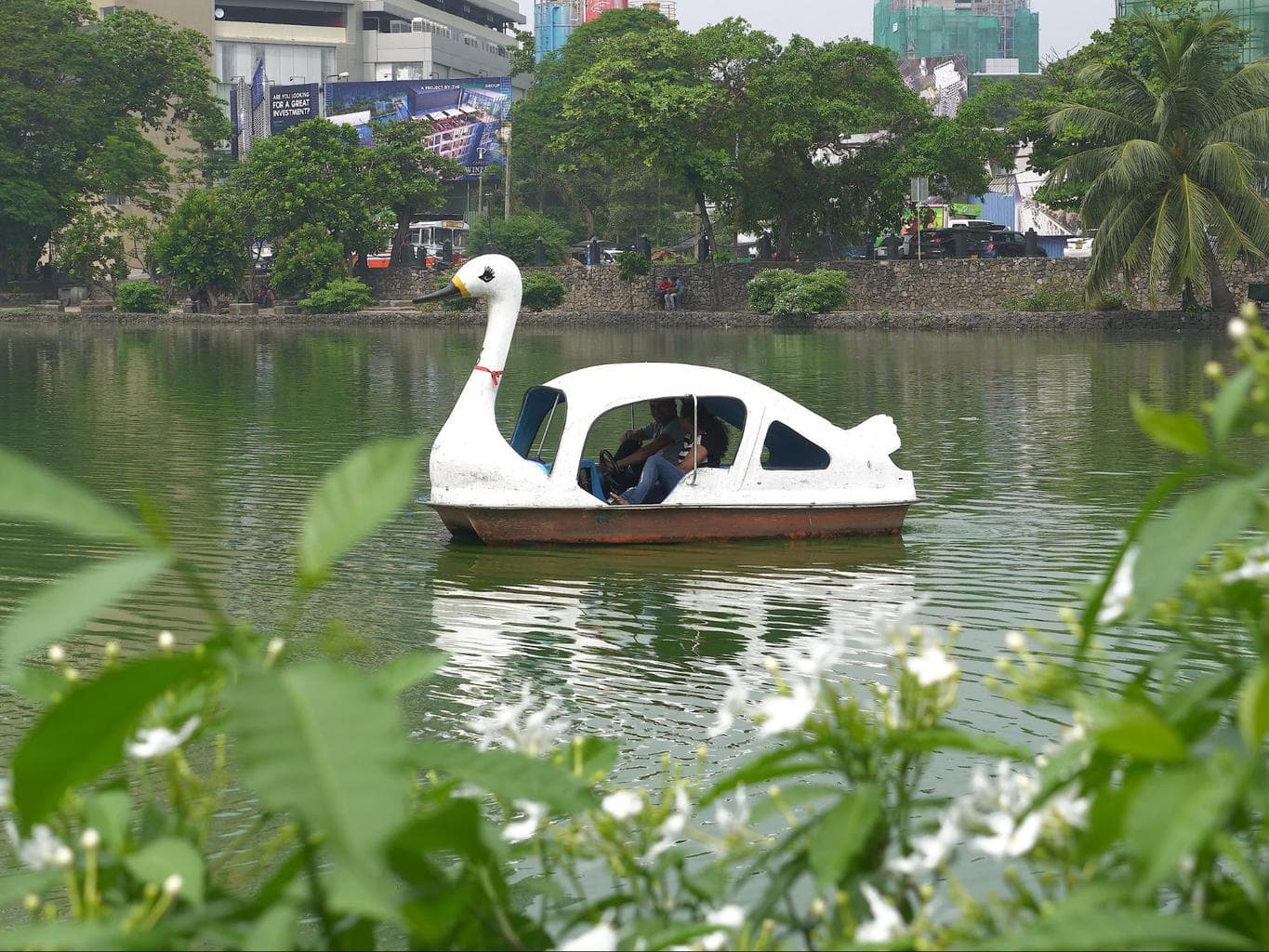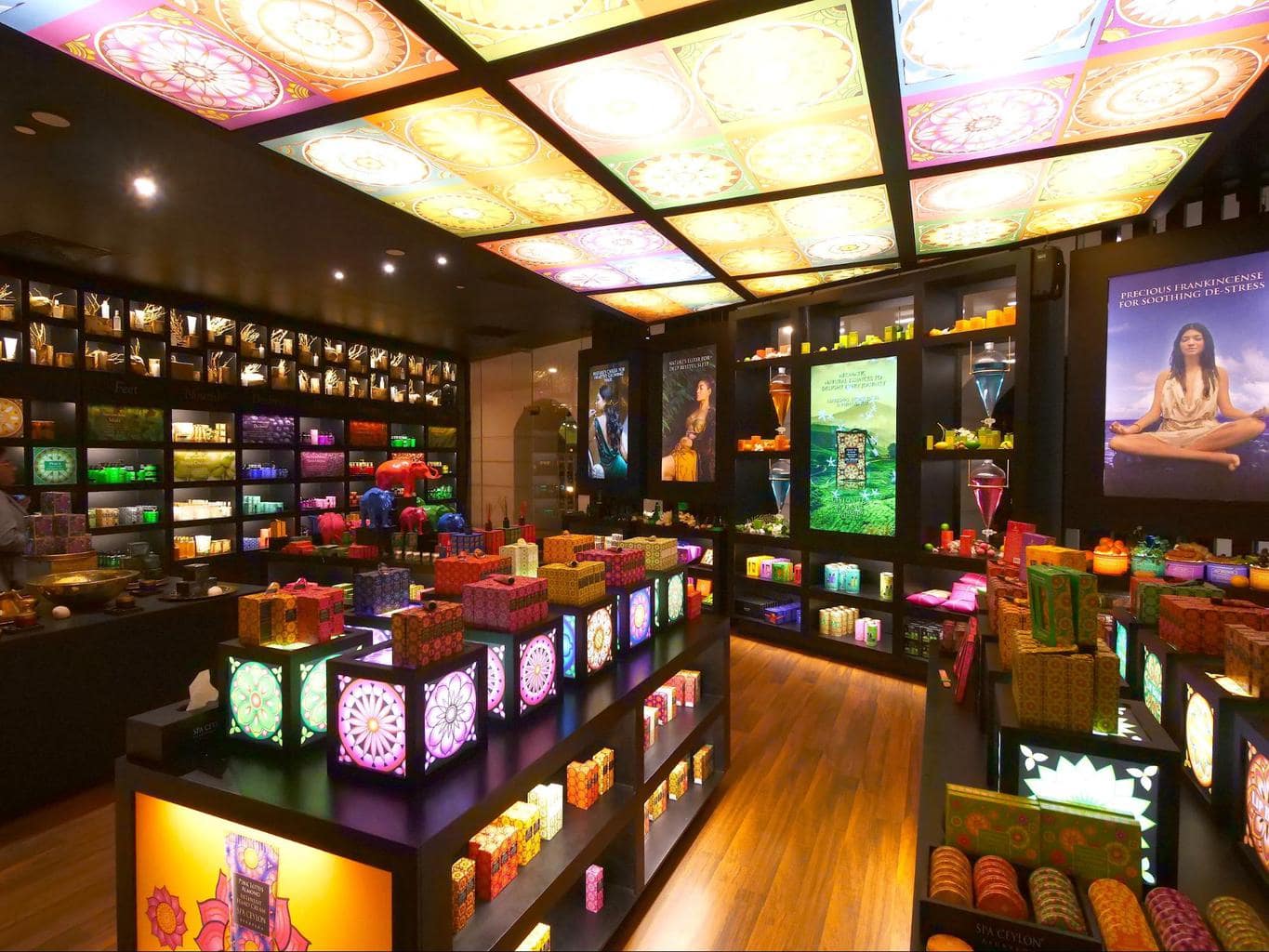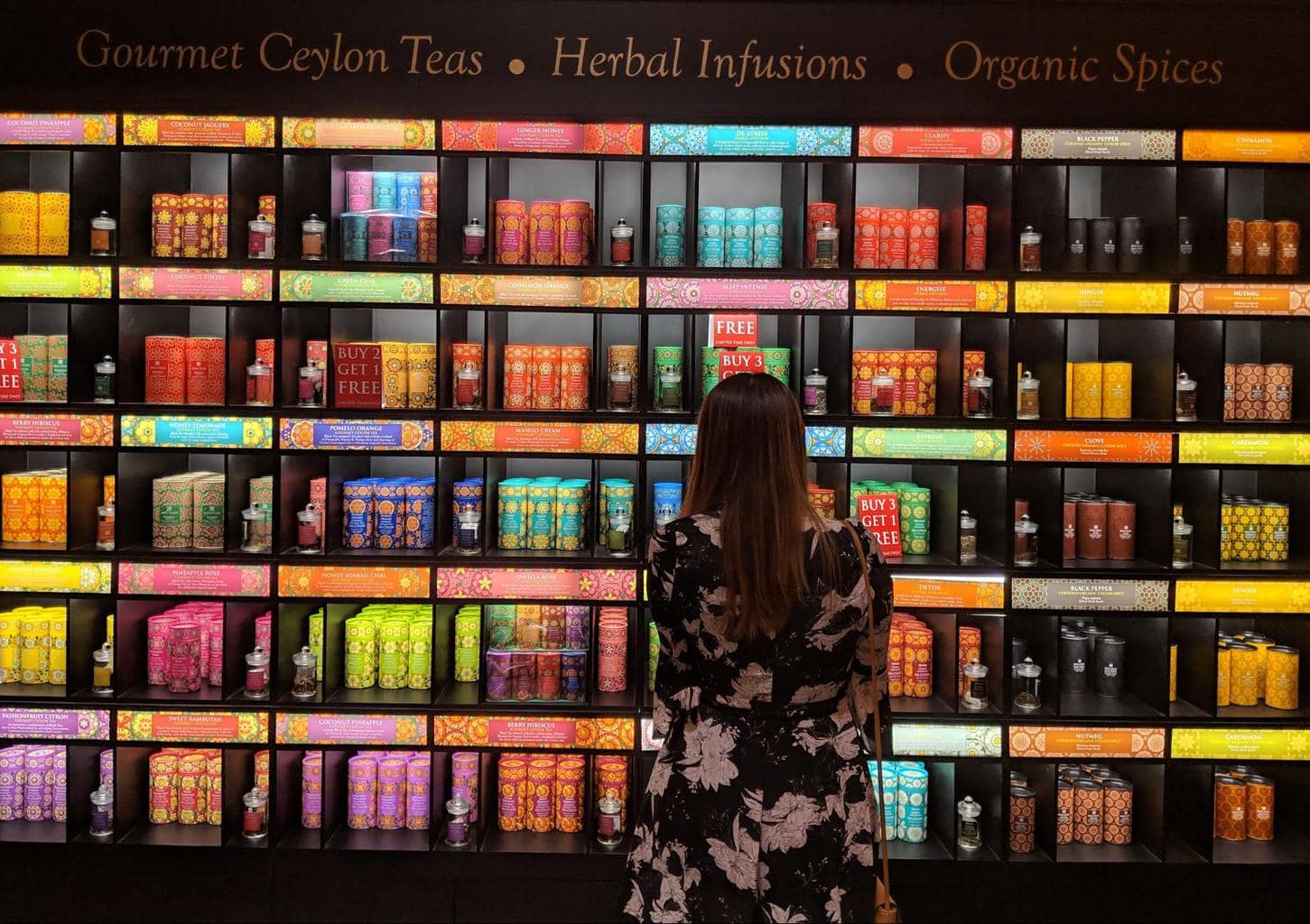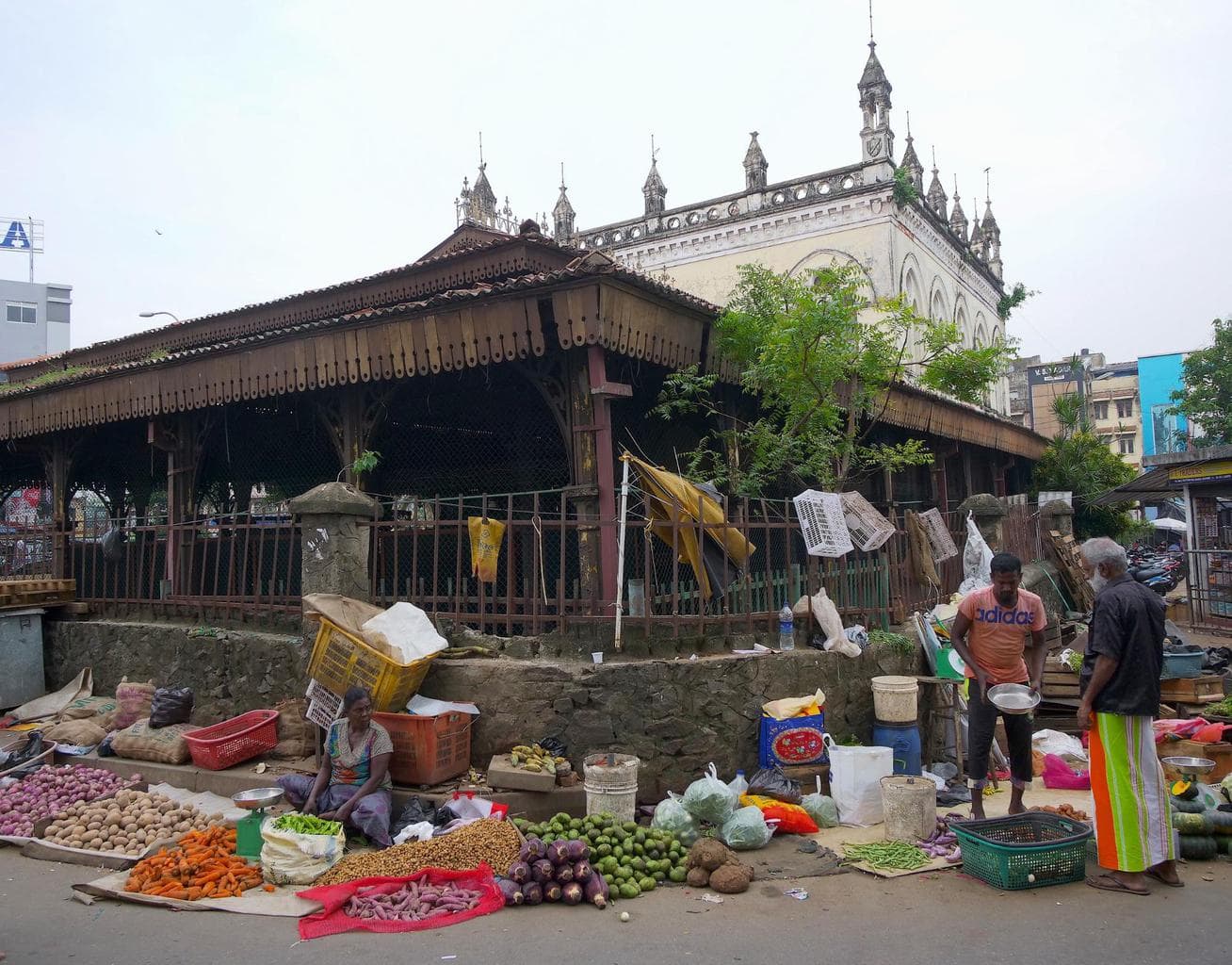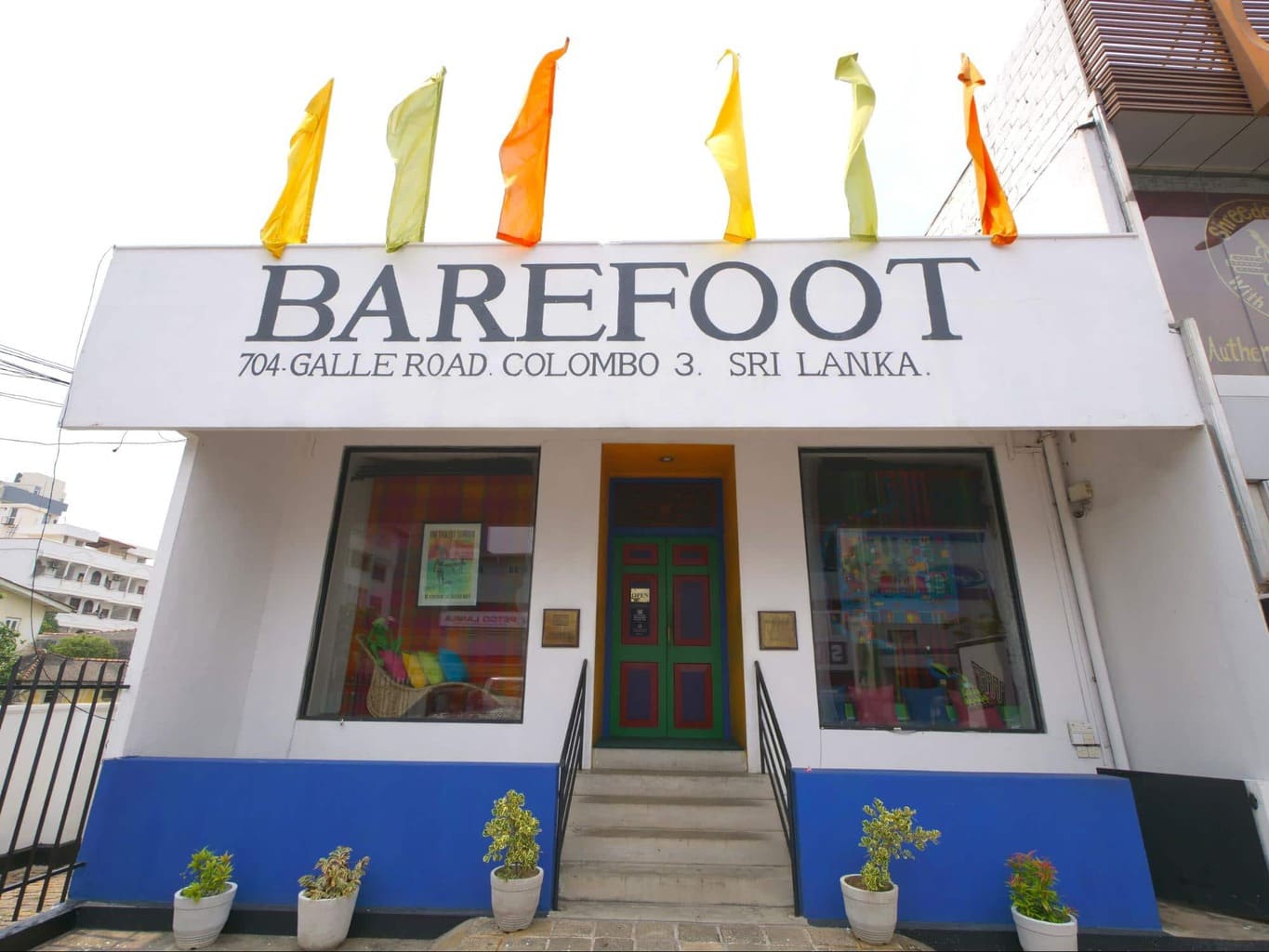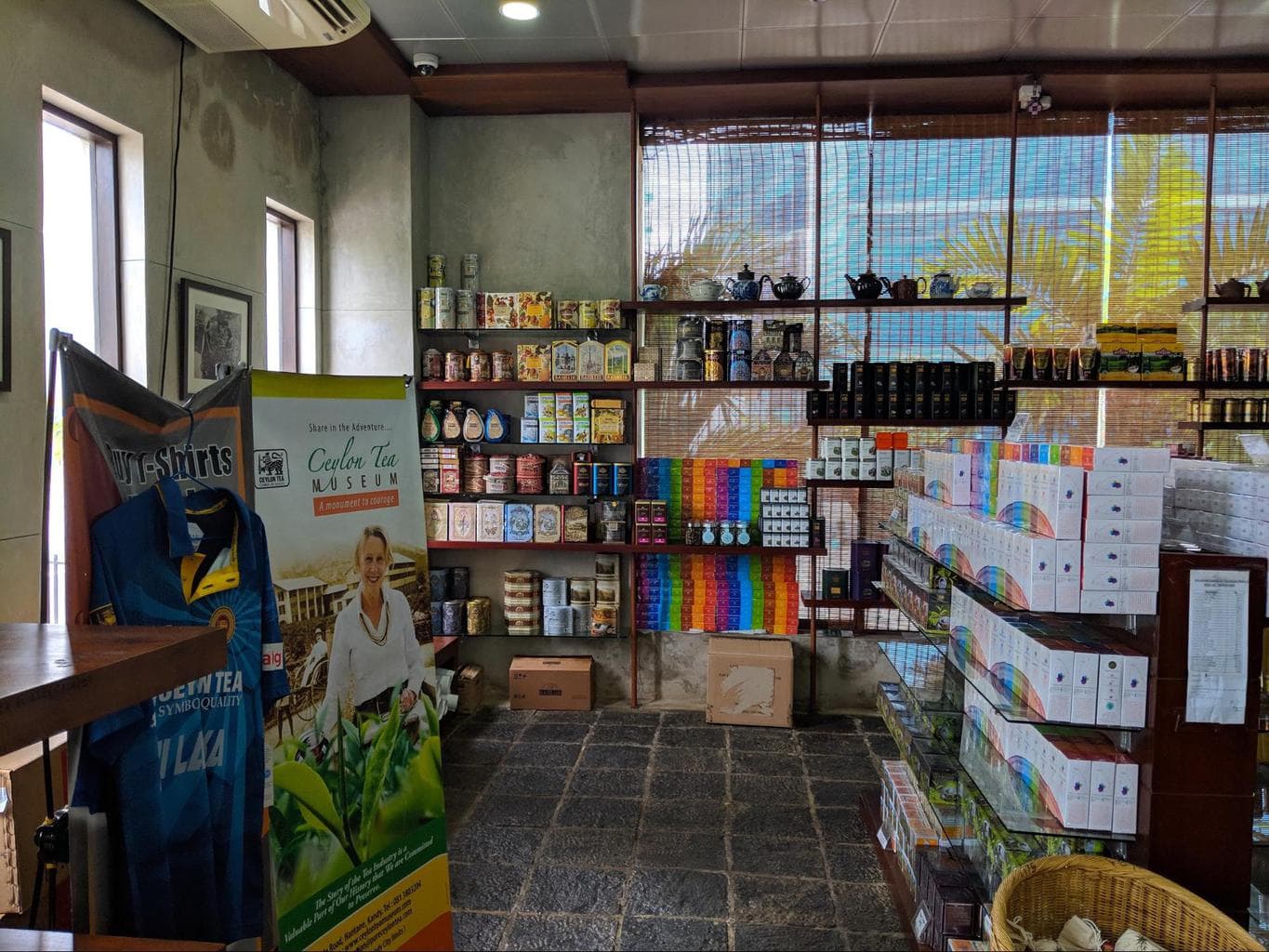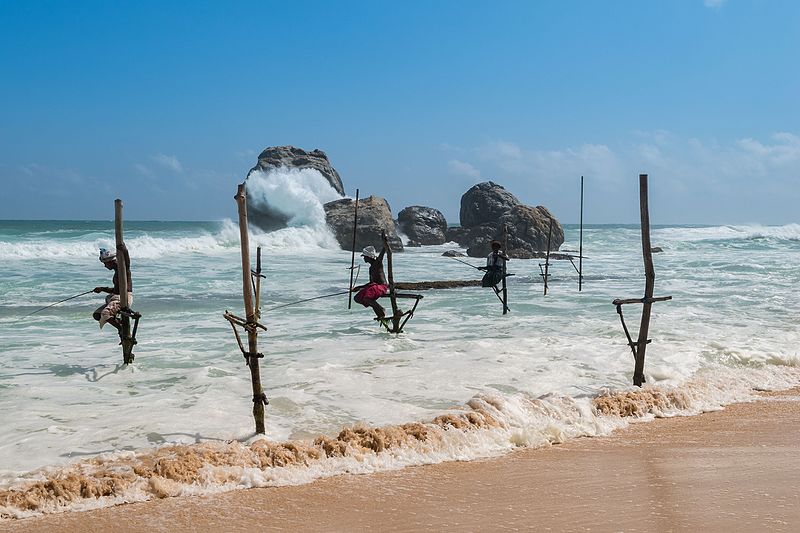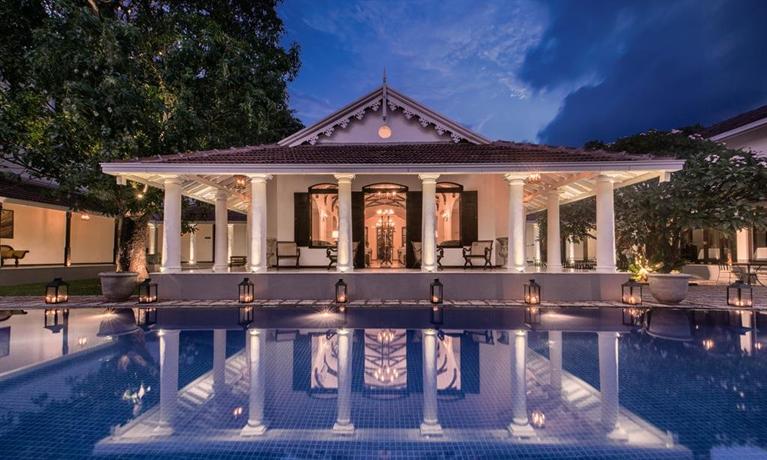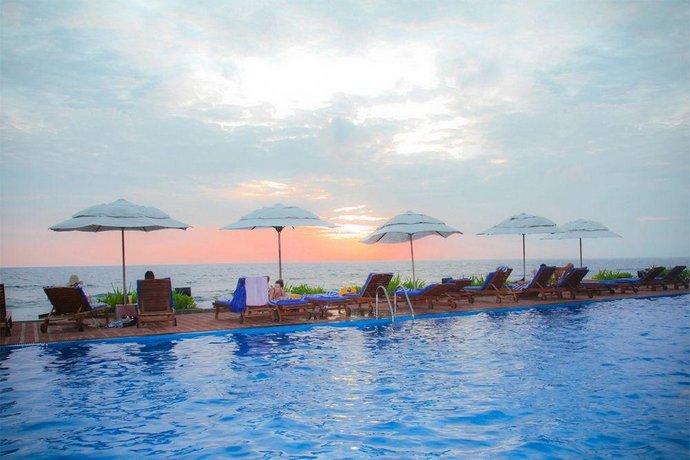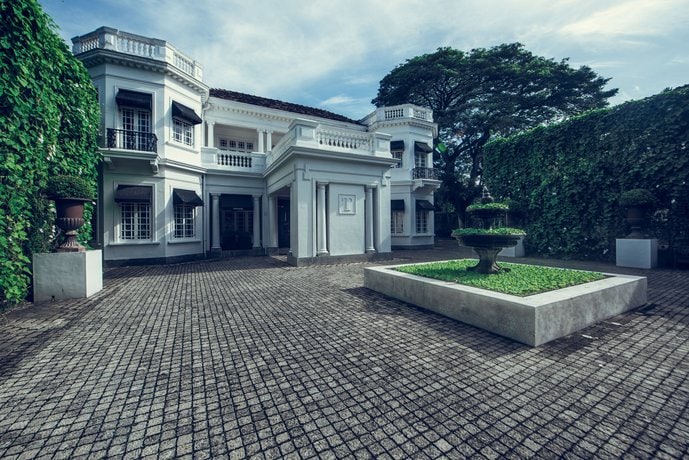Visiting Colombo is not one of the top things to do in Sri Lanka. Usually, visitors head out towards north, south, east or west parts of the country, looking to explore the heritage, the beaches, the tea plantations, the ancient civilisations or the many UNESCO sites.
But the majority of tourists to Sri Lanka will have to spend at least a day in the capital and will wonder what to do in Colombo, a city without the noteworthy landmarks of other Asian cities. I did the same and, in my many trips, I only set aside 1 day on the way in or out of the country, for some Colombo sightseeing.
But through the many visits, I started to realise that there were a lot of things to do in Colombo if you looked a bit deeper than the obvious surface. And, finally, on my last trip, I actually focused on the city, and spent a bit of time going around to check out the best places to visit in Colombo. This list was the result of that and all the previous trips.
Galle Face Green Colombo
Galle Face Green is the city’s most famous attraction and the number one place to visit in Colombo. No trip to the city can end without at least spending a couple of hours there.
This stretch of green grass along the sea promenade is buzzing all times of day and night with food stalls, children flying kites and couples holding hands as the wild and strong waves hit the shore.
In any other city, this would be the equivalent of the central square or the main promenade or street. I love just walking up and down Galle Face Green and people watching, then occasionally sitting down on a bench and seeing the world go by.
Particularly interesting spots on Galle Face Green are the jetty, jutting out onto the ocean, making for a fun experience. Beware you may get splashed.
In the dry season, when the sea is a bit tamer, people go down to the narrow beach to dip their toes. Sri Lanka is a conservative country so you will see the locals fully clothed. Be respectful and do not strip down to your swimming gear.
Look out for the street vendors selling kites too. There are a few stalls a third of the way from Galle Face Hotel which sell all sizes and colors of kites for children and for adults. They come in bright neon colors and in the shape of cartoons or all kinds of animals, but you can also find the traditional triangle shaped version.
The winds are always strong here, and this is the reason why the waves always splash wildly against the shore, so it is easy for the kite to take off and stay up. I have seen parents showing their children how to fly a kite for the first time, or vendors showing kids and parents how to set it up and run so that it takes off.
It is heartwarming to see the kids run with their kites and in the age of social media and electronics, it is nice to see that an old age entertainment like a kite, which I used to make as a kid, still has a place.
Galle Face Green is also an amazing place to sample some of the best street food in Colombo. Evenings see a host of stalls opening up along the sea and usually barbecuing, deep frying or grilling foods, but also selling baked options. These are not the healthiest of foods, but they are tasty and they are an explosion of smells and flavors.
You can buy some items from the many stalls to take away, sit on the grass and enjoy them, or sit down at one of the larger stalls which has plastic chairs and tables. The atmosphere is convivial and friendly, and it is not strange for one of the locals to strike a conversation. Try Nana’s which is one of the oldest standing and a favorite.
Best temples, churches and places of worship in Colombo
While not on par with Sri Lanka’s UNESCO-filled Cultural Triangle like Kandy, Anuradhapura, Polonnaruwa, or Sigiriya, there are a few cultural places of interest. In fact there are beautiful religious monuments to explore throughout the city. Here is my list of the best temples, churches and places of worship in Colombo.
St. Andrew’s Scots Kirk Church
The first St. Andrew’s Scots Kirk Church was built in the beginning of the 19th century elsewhere. Its origins started with a group of British settlers who arrived in then Ceylon to plant tea. One of the first ones was Lipton, of the famous tea brand, and with him were several other Scotsmen.
The church started as a spiritual place of worship and not as part of a missionary effort and the Presbyterian followers mixed well with the Dutch Presbyterians of the time who had arrived in Ceylon before the British.
When the original church had to be demolished because of the city expansion, it moved to its current location and reopened in 1906.
The building is quite unique with its stained glass and a peculiar modern church look. It has an active community and a thrift shop every Tuesday during lunch time. The church is open all year round. More information here.
Wolvendaal Church
Wolvendaal Church is a Dutch church in Pettah and one of the oldest Dutch architecture buildings in the city built in 1757.
The Christian Reformed Church or Dutch Reformed Church, has its origins in the Protestant Dutch colonisers who took over the occupation of Ceylon in the 17th century from the Portuguese. From then on, Protestant services were available in Colombo.
This red roofed white walled church received its name from the wolves that early Christian believers thought they saw in the area around the church. At that time, the church was located outside the city.
When it was built, the church had a dome and a lion on top but both were destroyed by lightning. The church was an important religious center during the Dutch occupation and several Dutch Governors were buried inside.
If you enter the church, you will find the bare walls traditional of the Doric style but also intricate and beautiful furniture pieces, tombstones and even a silver baptismal basin and an ebony tripod, all historical items from the 17th and 18th century.
Gangaramaya Temple
Gangaramaya Temple is Colombo’s most impressive attraction. This temple cum school, museum, learning institution and spiritual destination is one of the best places to see in Colombo.
Founded by Hikkaduwe Sri Sumangala Nayaka Thera in the 19th century as a small temple, it evolved into an amalgamation of Buddhist culture, traditions and religion by the hands of his followers.
The temple is an important element in the lives of many in Colombo and has several buildings and rooms. At the center of the temple is a stupa with the main Samadhi Buddha.
A separate hall hosts 28 Buddha statues and the most impressive part to me was the Bodhi tree, standing tall and wide in the temple courtyard. The area around the tree is quiet and invites contemplation. There were several locals praying, reading and otherwise meditating. I sat down and did the same.
But this is not all. The temple has a replica of Indonesia’s famous Borobudur Temple on one side, stacked over a few levels and almost hidden at the back, you can even go in (while you can’t go inside the real Borobudur) and a breathtaking relic chamber with so many relics that it eclipses any other Buddhist temple I have ever seen. Gamgaramaya’s wealth is staggering.
To top it all off, there is a large museum housing items donated by people from all over the world, including several heads of state from the various branches of Buddhism, from Korea to Thailand.
All the objects donated are on display in the museum or in the various halls. You can find an incredible amount of gold, often times simply displayed behind a glass, others in a British era iron safe.
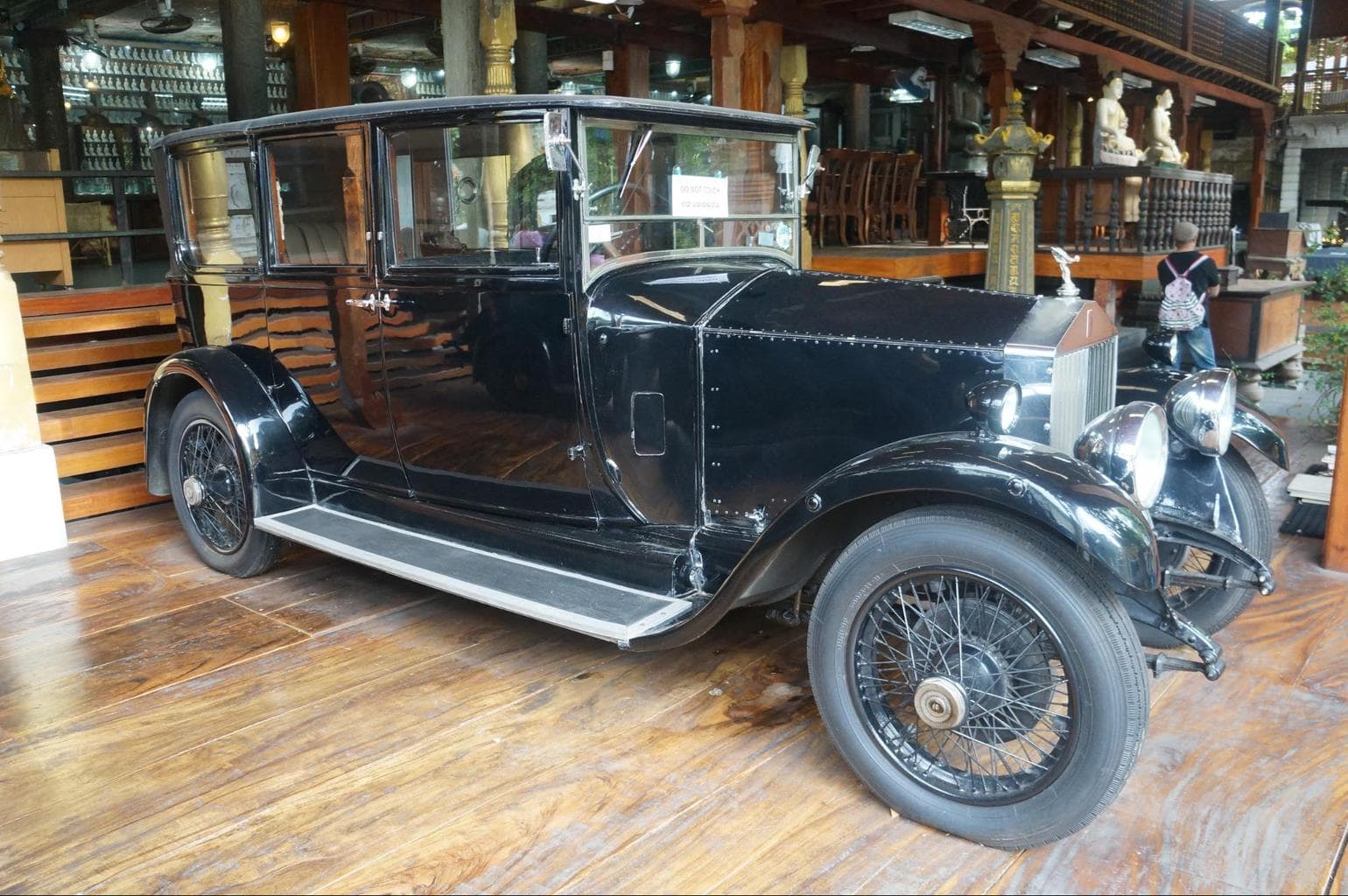
Part of this collection also includes taxidermy elephants which you can see near the entrance on your way to the bodhi tree, and a row of vintage cars, including a Rolls Royce and several Mercedes donated through the years laying idle at the back of the museum.
The elephant is so realistic that I had to get real close to figure out if it was a statue, a taxidermy version or any other artistic work. The cars are even more surprising at a temple as I have never seen a Buddhist monk drive. At first I thought this was the parking space but the cars are really old and covered in dust and I understood from the staff that they were donated.
Gangaramaya also set up a vocational school attached which teaches agricultural skills to village drop outs. There is an entrance fee to the temple and you need to leave your shoes outside. But I went in without realising I had to pay and on my way out when it became apparent, I told the staff who were relaxed and told me to just leave a donation in the box.
More information can be found here.
Seema Malakaya
Seema Malakaya is a Buddhist temple cum meditation space located floating on Beira Lake and a few meters away from Gangaramaya Temple. The space is managed by the temple and is made of three small square platforms, the main one having a covered pagoda surrounded by sitting Buddha statues.
The version of the temple that stands today was designed by famous Sri Lankan architect Geoffrey Bawa and financed by a Muslim businessman in memory of his son. The three platforms are interconnected by bridges. The temple has a Bodhi tree grown from a branch from the Bodhi tree in Anuradhapura on the platform on the left.
While the space is small and the temple quite popular with tourists, the majority will come in to take a couple of photos and go out. If you want to take a bit of a break under the shadow of the tree this is a rather serene place to do so.
Sambodhi Chaithya
This is as odd as temples can get. Sambodhi Chaithya sits at the entrance to the new Colombo port developed atop the main road. This temple is made of an off white stupa crowning two arches and looks as though it is guarding the port and watching over anyone entering.
You can go up and in, without your shoes, and visit the temple from the inside. But the main purpose of this unique structure designed by the first female Prime Minister in the world, was to be seen from out at sea. Although I have not been on a boat arriving in Colombo, I am pretty sure she accomplished her objective.
Jami Ul Alfar Mosque
This pretty white and maroon checkered mosque is quite impressive in real life and is not called the Red Mosque for nothing.
The visitor’s entrance to the mosque is tucked in a narrow side street filled with stores that unsuccessfully hides its majestic architecture. Visiting the maze like mosque is one of the top things to do in Colombo.
Women need to put on full body robes before entering and shoes need to be removed as this is a place of worship that is quite busy with the Muslim community. One of the best views is from the side, seen from the main road.
The mosque was built in 1909 by the local Muslim community in the pettah area who wanted a place to head to to fulfil their daily prayers. While the mosque was originally smaller, it was expanded in 1975 to the current 10,000 capacity.
Temple of Sri Kailawasanathan Swami Devasthanam Kovil
Sri Kailawasanathan Swami Devasthanam is one of the most colorful places to see in Colombo. The temple was built by a group of Indian Chetti traders known as Thiruvilanga Nakarathar in 1783, making it one of the oldest temples in Colombo. When they arrived in Colombo through the maritime trading route with India, they started worshipping a shivalinga which eventually evolved into the temple.
The traders were wealthy thanks to their successful businesses, so finding the right financing to construct the temple was not difficult.
The first name given to the temple referred to the Dutch officer who was responsible for the trade in the area around the temple, Captain Gardens Temple.
The architecture of the temple is a unique sight in Colombo. Following the south India style, Sri Kailawasanathan Swami Devasthanam tower depicts intricate scenes in vibrant colors. It is very similar to the temples found in Tamil Nadu or even in Singapore Little India.
You can visit the temple but photos are not allowed inside and you should remove your shoes and wash your feet before entering.
The best museums in Colombo
Unlike other cities, Colombo only has a few museums to visit yet they are quite interesting and one of the best ways to discover Colombo and even Sri Lanka.
Economic History Museum
Also known as Central Point, the building of the Central Bank of Sri Lanka is a 2011 renovated building from 1914 which was the tallest in Colombo at the time. Inside the building is a small money museum on the ground floor that was opened in 2013 and which is one of the most unique places to visit in Colombo.
As you walk past outside, you can see through the large windows and make out some of the displays, or walk in and see the Economic History Museum from up and close, entrance is free. If you do get in, look up to see a huge chandelier.
The museum retells the story of money in the country and the evolution from barter economy to currency and displays coins from all the periods of Sri Lanka’s history, from the Kingdom of Anuradhapura, to Polonnaruwa and today.
National Museum
I was very positively surprised by the National Museum. I was initially going to skip it but then realised it was a great place to learn more about Sri Lanka so it is definitely one of the top places to visit in Colombo.
The museum opened in 1877 as the Colombo Museum and was inaugurated by the Governor of Ceylon at the time. It later on changed its name to the National Museum.
The exhibits are spread over two buildings and two floors and it has a section for each of the historical periods in Sri Lanka’s history. Because the country has such a long history, dating back millenia, you can pretty much tour its entire past through the many rooms. It is like going through the whole of Sri Lanka in one place.
Since I have been to most of the historical sites in the Cultural Triangle, the museum was a nice reminder of the many civilizations that lived in the country and the stunning beauty of the country.
Through photos, exhibits, artefacts, replicas and even authentic items like the king’s throne or parts of temples from its vast geography, you can learn about all of Sri Lanka’s cultural UNESCO sites, from Polonnaruwa to Anuradhapura, the Dambulla caves and Kandy.
The museum also talks about the more recent history of Sri Lanka, during the colonial times of Ceylon and has some interesting objects, like a section on the evolution of toilets in the country that is pretty interesting.
The entrance fee is small but they did not seem to have change so bring small notes.
Sri Lanka Air Force Museum
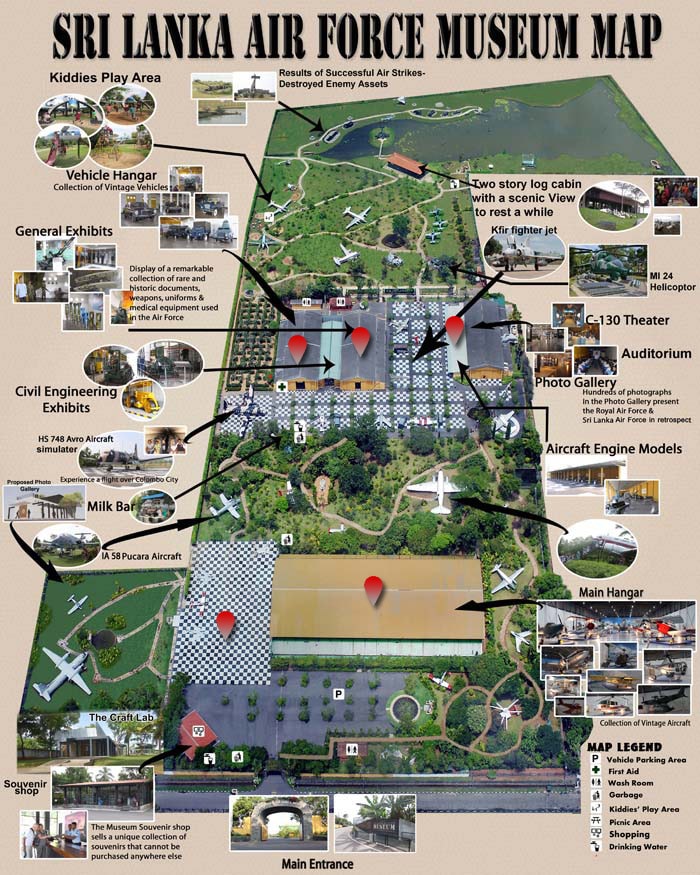
This is an unusual but cool museum and perhaps one of the most unique places to see in Colombo. The Air Force Museum focuses on both the technological part of aviation as well as the historical component starting with the Royal Air Force operations in the country during WWII until today.
The museum is located away from the downtown area of Colombo in the Aircraft Preservation and Storage Unit at Air Force Base Ratmalana and it opened in 1993.
Dutch Museum
The Dutch Museum, as the name indicates, is dedicated to the Dutch occupation of Sri Lanka before the British and their trade and business along the coastal parts of the country.
The museum is housed in the former residence of the Dutch Governor which was built in 1692 and has two buildings and a garden. Here you can find more about the 10 years the Dutch spent in the country and observe several items of the time.
Colombo’s most famous buildings and landmarks
Colombo is a sprawling city and, as the capital of the country, it played an important role in Sri Lanka’s past. Many of the most important tourist attractions in Colombo are its landmarks and buildings so this section is devoted to those.
A lot of the places in Colombo on this list I had taken note of before arriving, planning to go check them out, but several were added to my list while I was there, walking through the streets, or zapping around on a tuk tuk and spotting any interesting or beautiful buildings worth checking out.
The President’s House
This is the same location where the Dutch and British governor houses and government buildings used to be and today is where the Sri Lankan President lives. The old house was demolished in 1856 and the new building constructed and when Sri Lanka changed its name from Ceylon the building was renamed The President’s House.
You cannot visit the building but if you walk past its entrance on Queen’s Road, you can see the personnel in their official uniforms.
Lighthouse Clock Tower
The Lighthouse Clocktower is one of the best known places in Colombo. The tower stands tall in the middle of a street at the junction between Chatham Street and Janadhipathi Mawatha and it is impossible to miss if you are in the area.
Today, the tower is a clock tower but it used to be a lighthouse, hence the double name. The lighthouse functionality is not longer operational but can still be seen.
Originally, the tower was meant to be a clock tower and was designed by the wife of the British Governor and finished in 1857. However, the clock had been in the storage area of the British government offices since 1813 when it was commissioned, yet it fell into oblivion when the focus shifted to the wars in Kandy and the other priorities.
The mechanics of the clock were built by the Big Ben masters, Dent, and eventually installed in 1857, two years before the Westminster clock, but the current one is from 1913 and replaced the older version.
The original lighthouse was located elsewhere but demolished when the port ramparts were removed and the navigational light was then moved to the clock tower in 1867 so the tower acquired this double purpose.
The fascinating story of the clock tower can be read here.
Colombo Lighthouse
The Colombo Lighthouse is located by the water, in Colombo Port and was activated in 1952 when the old one in the clocktower became useless because of the surrounding constructions.
The brown brick tower is flanked by four lions at the base and it is worth a trip because of its location by the sea right by the crashing waves, and the views from one end of Galle Face Green.
Cargills & Co. building
This is one of the most emblematic buildings in the city and is highly recommended as a visit. Although not your regular tourist attraction and not mentioned in any article with the best things to do in Colombo, the Cargills & Co red and white brick building is a beauty and a slice of history.
Looking at the building I felt a bit like I was staring at a cross between the Red Mosque, because it is made with the same white and red colors, and the Raffles Hotel Singapore because of the vintage British period signs that are the same ones found in the Raffles arcade area.
The building is historical in itself, having opened as a department store in 1906 with hydraulic elevators and electric fans, and was referred to as the finest east of Suez, but the company is also part of Sri Lanka’s heritage and history.
With its roots in Kandy, Cargills & Co. was originally started by two men as a small grocery store which managed to survive the hardship of the tea plantations in the area. They then moved to Colombo and into the building which was the former residence of a Dutch Commander at the end of the 18th century and then of a British Governor in the area. But the foundations of the building are from a century earlier.
Milne, one of the two partners in the venture, decided to move back to Glasgow and the other partner, Cargill, took over the business at the end of the 19th century. Eventually the building was renovated and reopened in 1906 as an upper tier department store and the company went public in 1946 and a controlling stake was sold to Ceylon Theatres Group in 1981.
The ground floor of the building still hosts a grocery store although its grandeur has faded and is nothing like what it used to be, just a piece of nostalgia reminiscing of a different time. But look out for the vintage signs hanging from the ceiling outside and a Mars statue from the Dutch Commander’s house by the elevators.
Lotus Tower
This building in the city’s skyline is one of the weirdest landmarks in Colombo. Among the shophouses and colonial buildings, the places of worship, the parks and the buzzing streets, the Lotus Tower stands tall and futuristic in a shocking way.
Looking more like it belongs in Shanghai, this modern addition shaped like the stem and flower of a lotus and a major Buddhist symbol, is 350m tall and has been financed by the government of China as a telecommunications tower, the most modern in South Asia. The tower will be finished in 2020 and seems to be at the center of a revival in Sino-Sri Lankan relations.
Independence Memorial Hall and Museum
The Independence Memorial Hall is located in Independence Square and above the Independence Memorial Museum. It was built to commemorate Sri Lanka’s independence in 1948 and the annual celebration takes place here. At one end of the memorial there is a statue of the first Father of the Nation.
The memorial feels like a temple floating over water built with a series of columns holding a roof and it is a popular place for locals to relax in the shade, for tourists to stop for a photo op and for artists to display their works.
The basement of the memorial hosts the museum which was built to commemorate the people who served the nation through a series of busts. Quite an interesting sight to walk underground a room filled with the stone versions of dozens of people.
The memorial was the third pit stop in the Incredible Race Asia season 4 third leg.
Lloyds Insurance Building
This attractive and ornate building mixing in Baroque and Renaissance styles was built in 1908 during the British colonial times. The building is today the office of the Employee Provident Fund but it was originally occupied by Freudenberg & Co. but later on leased to several other businesses.
The building was sold to Ceylon & General Properties in 1933 and it changed hands a few more times as the headquarters of several other businesses until the Central Bank bought it in 2009 and proceeded to fully renovate it.
The Old Town Hall Building
As someone who likes to look for the hidden parts of a city and stumble upon things that seem forgotten in serendipitous moments, the Old Town Hall building is the perfect spot.
The building, its surrounding market and the ground level sort of transport museum, are some of the most interesting parts of Colombo and a surprise find in the middle of Pettah.
This used to be the former Colombo’s Town Hall and dates from 1879. Its architecture looks like a church and as I approached the building, I thought it was indeed one. Today, it is half dilapidated, half renovated and it is surrounded by chaos, tuk tuks, vans trying to deliver their goods, trees growing out of the broken pavement, street vendors, bicycles and street sellers. The building is still used by the government to hold meetings and you can walk in if you like to see what it is like inside.
But the interesting section is the ground floor transport museum which displays all sorts of vehicles from a locomotive to a refurbished vintage van. The area is open air but with a metal roof with intricate detailing. You may find a guard, but there is otherwise no entry fee to just wander.
World Trade Center
The twin-tower World Trade Center is one of the landmarks in Colombo and part of the global network of World Trade Centers Association.
The modern 43 storey office and commercial building combines 4 lower levels with shopping and 39 with offices, it is 152m tall and was open in 1997. It is one of the most sophisticated office buildings in the country and the 6th tallest structure.
The World Trade Center was attacked by the Tamil Tigers twice but the building escaped unscathed.
Storefronts on Union Place
The British replicated a very recognizable architectural style across all their Asian enclaves: the shophouse. Shophouses were shops and houses, with the ground floor devoted to commercial endeavors while the family used to live in the floor above.
Shophouses can be found across many of the British colonial cities, from Penang in Malaysia, to Singapore, Chennai and even Colombo. But not a lot of that style has been preserved today in Sri Lanka but only a row in Justice Akbar Mawatha street.
These houses belonged to the private secretary Bishop Coplestone who moved to Colombo at the end of the 19th century. What started as a small bookstore selling religious books, ended up becoming one of the largest printing houses called H W Cave & Company publishing travel books on Sri Lanka authored by the same.
If you are in Colombo, these shophouses are one of the nicest places to visit in the city, especially since there have been talks to both renovate as well as demolish them due to their dire state of conservation, so who knows how long they will be standing for.
Take a break at the Gallery Cafe
The Gallery Cafe is one of the nicest places to come take a break from the heat and humidity of Colombo. The building is the former studio and office of famous Sri Lankan architect Geoffrey Bawa and was turned into a gallery, shop and restaurant-cafe by the current owner. From the moment you walk in and spot the black and white stripes of the tableware, you know you just stepped into a pleasant surprise amid chaotic Colombo.
The cafe was one of the first Western style places to open in Colombo and the first gallery cafe in the city, a concept that has been replicated by others. I have been returning to it everytime I visit the city since my first time in 2009.
The Gallery Cafe opened in 1998 and is part of the art and design group Paradise Road which was founded by local design guru Udayshanth Fernando in 1987 when the fight with the Tamil Tigers was at its peak and Colombo received practically no tourism.
Paradise Road started as a small shop selling locally made handicrafts and antiques and expanded to include adjacent businesses such as galleries, cafes and even a boutique hotel called Tintagel by Paradise Road which is located in a colonial mansion near the Gallery Cafe and follows the same aesthetics and design that made the brand famous.
The Gallery Cafe has a good selection of mostly international but locally inspired dishes and a huge selection of cakes for afternoon teatime that are irresistible and on display. There are tables indoors, in an open air space and outdoors in the courtyard under umbrellas and the shade of large trees.
More information here.
Eat and drink the best Sri Lankan food
The are a few places of note in Sri Lanka if you’re looking for a bite to eat. From instagrammable cafes to famous music video sets, there are some noteworthy restaurants in Colombo. Here are my favorite places to eat at in Colombo.
Have curry and rice at the set of a Duran Duran video
Not so much an amazing restaurant but an institution with a celebrity claim to fame: the Pagoda Tea Rooms is where Duran Duran’s Hungry like the wolf video was filmed, and it won a Grammy. You will not find any snake charmers or singing monkeys inside, but the tables and chairs are very similar.
The 1884 tea room is one of the oldest places to eat in Colombo and is known for offering good tea and pastries at affordable prices although you can also get the eponymous curry rice dishes with meat and fish that are so typical of Sri Lanka and feature on every local’s daily menu.
Tuck into spicy crab
This award-winning restaurant, included in the list of Best Restaurants in Asia, serves all sorts of crabs, as would be expected.
The Ministry of Crab is the partnership between two famous cricketers and a restaurateur to elevate Sri Lanka’s lagoon crab. Try the pepper or chilli crab or any of the other seafood options on the menu, and get down and dirty.
More info here.
Chill at a laid-back cafe
Black Cat Cafe is located in a 1920s colonial house with a nice driveway and green lush gardens in a residential part of Colombo. The cafe is casual, and a favorite with digital nomads and the guests from the B&B above.
What is unique about this place is the espresso-based specialty coffee on offer. Having been trained as a barista and owned a cafe myself, I can never go back to awful Starbucks coffee (sorry) so I try to find good coffee wherever I travel. It was quite hard to find it in Colombo since there is no tradition for espresso, rather for tea or heavily sweetened weaker options.
The Black Cat is a very laid back place with a few tables, vintage sofas and armchairs spread around the ground floor and a few outdoor tables by the verandah. There are some hip art pieces and paintings here and there but it’s all quite relaxed. The staff are easy going and, as claimed, they make you feel like you are in your home away from home.
More info here.
Have a coffee at the first specialty cafe in Colombo
Talking about coffee in Colombo and not mentioning Kopi Kade would be missing the biggest player. If you ask anyone in the city for the best coffee in town, they will all direct you here. This cafe has become the de facto pilgrimage spot to head to for the perfect cuppa.
This is not just because the team is made of trained baristas but also because the owner is as passionate as it gets for his beans and his coffee. Nimeshan Namasivayam imports his beans from abroad and roasts them in the cafe. He also shares his passion and knowledge with others at the barista courses he offers weekly.
The cafe has a minimalistic sleek design with simple straight line furniture and a changing roster of art on display and aside from great coffee it also serves some bites, otherwise called in Sri Lanka short eats, which include sliders and cakes, to go along with the coffee. Apparently, the hot chocolate is a hit, since Sri Lankans are not huge coffee drinkers.
More info here.
Get some work done at an instagrammable cafe
Cafe Kumbuk is one of the best places in Colombo to come have some vegetarian and even vegan food, although not all the food on offer here is vegetarian. This laid-back cafe on the ground floor of a colonial house at the back of another two buildings is far away from the main road so the traffic is muted.
The place is a favorite with the local digital nomad and entrepreneur community and it is common to see individuals or groups discussing ideas or frantically typing on their laptops.
The menu features organic and locally grow ingredients in pretty unique dishes that combine unusual items. The coffee is great and the atmosphere as relaxed as it gets. You can come here to get some work done and still feel like you are enjoying a chilled afternoon.
The decor is a mix and match of various furniture pieces, paintings and bean bags on the colorful tiles by the veranda. Some tables peer out through the open doors and headphone addicted strangers share larger communal tables. I observed that the staff and the customers seemed to know each other and I am sure a lot of them are regulars.
There is a small shop at the back selling local handicrafts, clothes and homeware and a yoga studio on the upper floor with all sorts of classes on offer all day.
Eat some authentic Sri Lankan food
Eating is one of the most telling activities one can do in any country. In Sri Lanka, the food will tell you a lot about the country’s geography, it’s bounty and its history.
Because of its close proximity to the south of India, the cuisine in Sri Lanka is very similar to that of Chennai and other parts of Tamil Nadu and even Kerala, it features a lot of fish, coconut based curries and rice.
The most common dish to eat in Sri Lanka is curry rice with any protein and vegetable on top of copious amounts of white rice. Locals eat this anytime of day, even for breakfast.
My favorite Sri Lankan dish is egg hoppers, which are usually eaten for breakfast but also available anytime as snacks. These are bowl shaped coconut pancakes with an egg cooked in the middle. You eat them with your hands dipping the pancake in chilli sauce.
Perhaps the next most famous local dish is kothu rotti, a mix of stir fried shredded pancake similar to a roti or a prata, mixed with vegetables, onions, eggs and meat. It is a local’s favorite and many places will claim to have the best.
If you buy it from a roadside stall where they will prepare it in front of you. You can pick how much of each ingredient is used and watch the skilled chef chop it all and prepare your food.
To finish off any meal make sure to order a local coconut which, in Sri Lanka, is yellow-orange and smaller than the usual Southeast Asian green variety.
Visit the best parks in Colombo
There are a few gorgeous and leafy parks to visit in Colombo that are great for a late afternoon stroll in the shade of enormous trees.
Viharamaha Devi Park
Viharamaha Devi Park was originally named Victoria Park and renamed after the mother of the king. It is a large green area located in front of the Colombo Museum that is quiet during the day and busier on weekends. In a city like Colombo this public park is pretty unique.
The park has lots of trees which give pleasant shade in hot Colombo, and a large pond and Buddha statue right in front of the Museum entrance. It was renovated recently and it now has nice paths for walking, running or cycling. This is also a pleasant place to come have a picnic lunch.
Beira Lake
Apart from being the largest park in Colombo, Beira Lake has an interesting past.
The lake was created by the Portuguese in the 16th century in an attempt to come up with alternative defensive strategies to the usual weaponry and defend their fort using a moat. The area around Fort Colombo, where the Dutch enclave was, was surrounded by marsh land which was dug out and then filled with water from a nearby stream.
All access to the Fort from then on was done using boats and the Fort was turned into an island, surrounded by water on all sides, the lake on one and the sea on the other.
After the Portuguese, the Dutch took control of the lake and fort by attacking the view of the lake. During their time, the lake was expanded at the expense of the fort area, as the constructions moved to higher ground and the lower level was flooded, and several islands were created, some of which were very large.
One famous one was Slave Island, a name used to refer to the slaves from Goa that used to sleep there at night during the Portuguese time. This name was given by the British and has remained till today to refer to that area in Colombo where the island used to be, today filled with high end hotels and shopping.
During British rule, Colombo expanded and the land reclamation from the lake kicked off, reducing its size. The lake shores were also the center of entertainment and parties, with rowing clubs and celebrations.
Further expansion of the city claimed more and more parts of the lake until it was reduced to almost a third of its original size. Today, the lake remains a slice of greenery in the city and you can enjoy it on a swan pedal boat.
Watch a cricket game
Sri Lankans, Indians and Pakistanis all have in common a passionate love for cricket. Even in Singapore, you can find their communities playing this sport in any stretch of green grass in the city.
If you have ever watched a cricket game you will know that it takes a lot of love and patience to sit through hours of playing so if that is not your thing, one of the best ways to have the best of both worlds is to watch any of the games at the Cricket Club Cafe.
Although not an old fixture of the city but a recent one which opened in 1996, spending an afternoon or an evening at the Cricket Club Cafe has to be one of the most fun things to do in Colombo.
The club is housed in a building that looks like a cross between a plantation house and a Chinese temple and its walls are covered with cricket memorabilia including newspapers from the 1930s. Any and all important games are shown on the large screens, also from other sports besides cricket.
If you are not a fan of the sport, you can sit outside in the courtyard and enjoy some Western and local dishes. More info here.
Enjoy an Ayurveda spa treatment
Like India, Sri Lanka is the birthplace of Ayurveda so enjoying an Ayurveda spa treatment is one of the best things you can do in Colombo.
One of the best places to do so is at one of the Spa Ceylon stores and spas. The local brand started by two brothers, sells a range of stunningly designed and packaged spa products in the brightest most colorful designs in all of its stores. From the moment you walk in you are wowed by the store’s look and the beautiful smell.
The products from Spa Ceylon are made with organic, eco-friendly, vegetarian, chemical free and locally grown ingredients including aloe vera, Sri Lankan spices, and local coconut oils. There are several product lines each with a different benefit and color scheme you can choose if you want to purify, relax, etc.
The products are also used in their spas where you can book a range of treatments. The most suitable option would be to try their signature Ayurveda treatments since they are local to Sri Lanka.
Don’t forget to buy some of the items to take home not just for you but as presents, I did that and my mum was impressed by how beautiful the packaging and the bottles were. This is one of the best souvenirs to take home, apart from Ceylon tea. More info here.
Head to the beach at Mount Lavinia
Colombo does not have great beaches. In fact, the shore along Galle Face Green is not only rocky but also wild, and you would not want to step in as the waves could crash you against the rocks.
One of the nicest alternatives to the city beaches and the crowded and touristy options in the north, towards Negombo, is Mount Lavinia Beach. And to make it extra fun, you can take the train to Mount Lavinia and enjoy the British contribution to the country and the journey.
The train ride takes about 15min and follows the coast so it is a great way to enjoy the sea views while also taking part in the country’s most famous mode of transportation. When you get there, stroll along the beach and pick a place for lunch. Better yet, if you are visiting on a Sunday, book a table at Mount Lavinia Hotel which has a legendary Sunday brunch with access to the pool.
Browse Colombo’s best markets
One of the activities I that I most like when I travel is getting lost in local markets. The smell of foods, the colorful things on sale and the buzz just makes me happy, plus you can learn so much about a place through the things people buy and sell.
Colombo has great markets to check out, some older and more chaotic than others. But in truth, the more chaotic and apparently disorganised it seems, the more fascinating I find it, because there is logic in the chaos and that logic is just not visible to foreigners. Spending time getting lost in the street markets is an ultimately local thing to do in Colombo.
So let’s take a look at the best markets in Colombo.
Old Town Hall Market
Near the Old Town Hall building, where the interesting transport museum, hidden inside a crumbling building, is, you can find one of the most crowded markets in the city. This is as overwhelming and happening as it gets for a market.
You will see dogs running around, vans picking up and dropping off merchandise, tuk tuks making their way through the narrowest spaces, street vendors selling everything and anything, and pretty much any type of item on sale.
The market is located partially undercover inside the old Edinburgh Hall built at the end of the 19th century for events and then repurposed into a market in the 80s, and partially in the streets, where it spilled over when the space inside was filled.
The hall is nothing like what it used to be and the walls are half falling down but it is scenic and atmospheric. Just beware of the traffic and make sure you don’t get run over by a tuk tuk.
Pettah market
More than a market, Pettah Market takes after its neighbourhood and is a sprawling network of streets all lined with vendors of all kinds covering pretty much all of Pettah. If you have only half a day in the city and are wondering what to do in Colombo in such little time Pettah Market would be my choice.
In these streets you can find sections with all sorts of items for sale. There are rows and rows of clothing, electronics, all sorts of small items that are useful and you would not know where to buy them, as well as a huge semi-covered fresh produce section also referred to as Manning Market.
The fresh produce section is my favorite. All sorts of vegetables and fruits are spread on the floor in front of the vendor’s eager to make a sale. There are also spices and dried fish, both used to spice and flavor dishes as well as snacks.
While you are in Pettah, make sure to also visit the Red Mosque and the Old Town Hall, in the vicinity.
Shop for souvenirs
We all like to by stuff when we travel, my house in Spain is full of the things I have accumulated over the years although, truth be told, after a frenzy of hoarding I tamed down and these days mostly buy alcohol and other consumables and a few smaller items for friends and family back home.
Oh, and a magnet for my auntie who has them from dozens of countries and should probably get a new fridge for all the ones that no longer fit.
So what are the best souvenirs to buy in Colombo? A combination of native items like tea or Ayurveda products, and locally made things like handicrafts, textiles, etc.
Barefoot
Barefoot is a bit like Paradise Road, one of the locally grown incredible gallery and design companies that have tried to cultivate local artists and expose them to an international audience. But Barefoot is a bit more established.
Started by a locally born and raised British journalist and writer, Barbara Sansoni, in 1964, Barefoot was first a shop in which the owner could sell her hand woven cloths and then evolved into other adjacent areas like a clothing line, a gallery, a bookstore, a cafe, and more.
Today, there are three branches in Colombo and the colorful sarong designs and fabrics that are all locally produced and which made them famous are beautiful gifts and souvenirs. The garden cafe is also a great place to stop for a bite and on Sunday to enjoy the live Jazz band. Their Facebook page also updates on events and ongoing late openings.
More information here.
Dutch Hospital Shopping Precinct
As the name indicates this area used to be the 1616 Dutch hospital, the oldest building in Colombo, and the buildings have been preserved into a shopping maze of alleys and stores hidden in the various buildings and pedestrian lanes.
It is all very pleasant and high end with various posh outlets and pretty much any brand with presence in Sri Lanka. This makes for a very easy stroll and shopping experience. There are cafes, restaurants, including the famously awarded Ministry of Crab, tea lounges and more.
Buy tea from all over Sri Lanka
If there is one thing Sri Lanka is known for this is tea. The central, eastern and southern part of the country is filled with amazing tea plantations that look stunning and are amazing to explore. I even stayed at Madulkelle, an African-style tented camp on the top of the mountains above the tea plantations in what still is one of my most memorable hotel stays.
But if you don’t have time to explore any of the Cultural Triangle or the spots around Kandy and would like to still take some tea home, the best place to buy it is at the Sri Lanka Tea Board Tea Sales Center where they sell the widest range of quality tea from all the brands in the country.
The shop is located on the ground floor of the Sri Lanka Tea Board headquarters in Colombo and is an unassuming simple shop with floor to ceiling shelves packed with tea from all the seven regions in the country: Nuwara Eliya, Uva, Dimbula, Uda Pussellawa, Kandy, Ruhuna and Sabaragamuwa.
You can find affordable options and premium ones, loose leaf or tea bags, small souvenir size selections or large pots, everything and anything is available here, especially the brands that are not commonly found and which can only be bought from the plantations themselves.
Perhaps the best gift to buy for those back home is a selection of the best Ceylon tea and you can decide how much you want to spend as there are gift packages for as little as $10.
Take a day tour of Colombo
If you would prefer not to see the sites of Colombo on your own, you can always take a guided tour of the city with an established local tour guide. There are a few available like this 8-hour tour where you will visit the remnants of Moorish, Portuguese, Dutch, and British settlements, visit the promenade of Galle Face Green, the pristine beaches of Mt. Lavinia and the exclusive district of Cinnamon Gardens with a visit to Colombo’s National Museum. The tour includes a lunch at the Galle Face Hotel and an afternoon tea at a lesser known restaurant at Colombo Fort. You can book your full-day tour of Colombo here.
There are also half-day tuk tuk tours of Colombo which visits most of the major sites in the city via the small motorised cart like the Fort Clock Tower, Colombo Lighthouse, Chatham Street, Pettah market, Wolvendaal Church and Captain’s Garden Hindu Temple. Book the tuk tuk tour here. Foodie’s will love the local food tour of Colombo and those looking for something a little different can test their skills at stilt fishing, a local traditional way to catch some fish.
Best hotels in Colombo
The best places to stay in Colombo are a blend of old and new. Blending centuries old architecture with modern facilities, these luxurious hotels in Colombo will take you back in history to a slower time. Grab some egg hoppers and Ceylon tea and get ready for extravagance with the best hotels in Colombo, Sri Lanka.
| Hotel name | Nightly rates (US$) | Book now | TripAdvisor Review |
|---|---|---|---|
| Residence by Uga Escapes | $350 | Booking.com | Agoda | 4.5* Read more |
| Galle Face Hotel | $240 | Booking.com | Agoda | 4* Read more |
| Tintagel by Paradise Road | $280 | Booking.com | Agoda | 4.5* Read more |
Residence by Uga Escapes
One of the most beautiful boutique hotels in Colombo, Residence by Uga Escapes is, as the name suggests, a former residence of a wealthy barrister. Built in the 19th Century, the former Victorian townhouse of Sheikh Salehboy Moosajee welcomed all of Sri Lanka’s high society.
Today, the property is a fairly small, 11-suite hotel located near leafy Park Street and peaceful Buddhist temple Gangaramaya. The room interiors are very spacious, grand yet elegant with wooden flooring, textured wallpaper and turn of the century trinkets. Each room comes with its own terrace. The brickface fine dining restaurant, Rare at Residence, offers mouth-watering fine dining gastronomic delicacies.
Book your stay at Residence by Uga Escapes on Booking.com | Agoda
Galle Face Hotel
The Galle Face Hotel is the most awarded heritage hotel in Sri Lanka and has a rich history. Inaugurated in 1864, right before the opening of the Suez Canal, is right next to the Raffles as being one of the oldest hotels in the world.
The courtyards, traditionally dressed staff and dark wood motifs provide an old world charm. The fact that the same family has been managing it since the turn of the century provides further evidence to solidify its historical stature.
Staying at the Galle Face Hotel is like taking a time machine back to when Sri Lanka was Ceylon. The renovations have not altered the Victorian feel with the thick carpets and dark wood. The Hotel is also one of the few in Colombo that is directly on the ocean. Rooms come with a verandah to sip afternoon tea and breakfast is such a treat with egg hoppers and views of the ocean.
See my complete review here.
Book your stay at Galle Face Hotel on Booking.com | Agoda
Tintagel by Paradise Road
Decked out in bronzes, browns charcoals and blacks, Tintagel by Paradise Road is a charming boutique hotel. If it’s good enough for former guests Their Royal Highnesses, Prince of Wales and Duchess of Cornwall, it is most definitely fit for you.
There are only 10 individually designed suites, so you know you will get that extra attention that only small hotels can provide. The hotel is great historical importance. The heritage residence was completed in 1930 as a residence for famed doctor Lucien Zilwa.
It was here that S.W.R.D. Bandaranaike, former Prime Minister was shot in 1959. It was a few years later that, in 1960, his widow, Sirimavo Bandaranaike, became the world’s first female Prime Minister. She lived at Tintagel until her death in 2000.
S.W.R.D. and Sirimavo Bandaranaike’s youngest daughter also became a Chief Minister, Prime Minister and then Sri Lanka’s first female President in 1994. The residence become the hotel you see today in 2005 under Udayshanth Fernando.
Beyond the wonderful history, Tintagel is a gorgeous respite from busy Colombo. The suites are simple and elegant, there are two dining rooms, an outdoor courtyard and a bar an the hotel is equipped with modern facilities including an indoor lap pool, gym, library and spa.
Book your stay at Tintagel by Paradise Road on Booking.com | Agoda
- Check if you need a visa, get help processing it at iVisa.
- Never ever leave without travel insurance. Get affordable coverage from World Nomads or long term insurance from Safety Wing.
- I find all of my flights on KAYAK. Check their Deals section too.
- Search for all your transportation between destinations on the trusted travel booking platform Bookaway.
- I book all my day trips and tours via GetYourGuide, they are the best and their tours are refundable up to 24h in advance.
- Get USD35 off your first booking with Airbnb.
- Compare hotels EVERYWHERE at HotelsCombined and book with Booking.com.
- Compare car rental prices at Rentalcars.com

